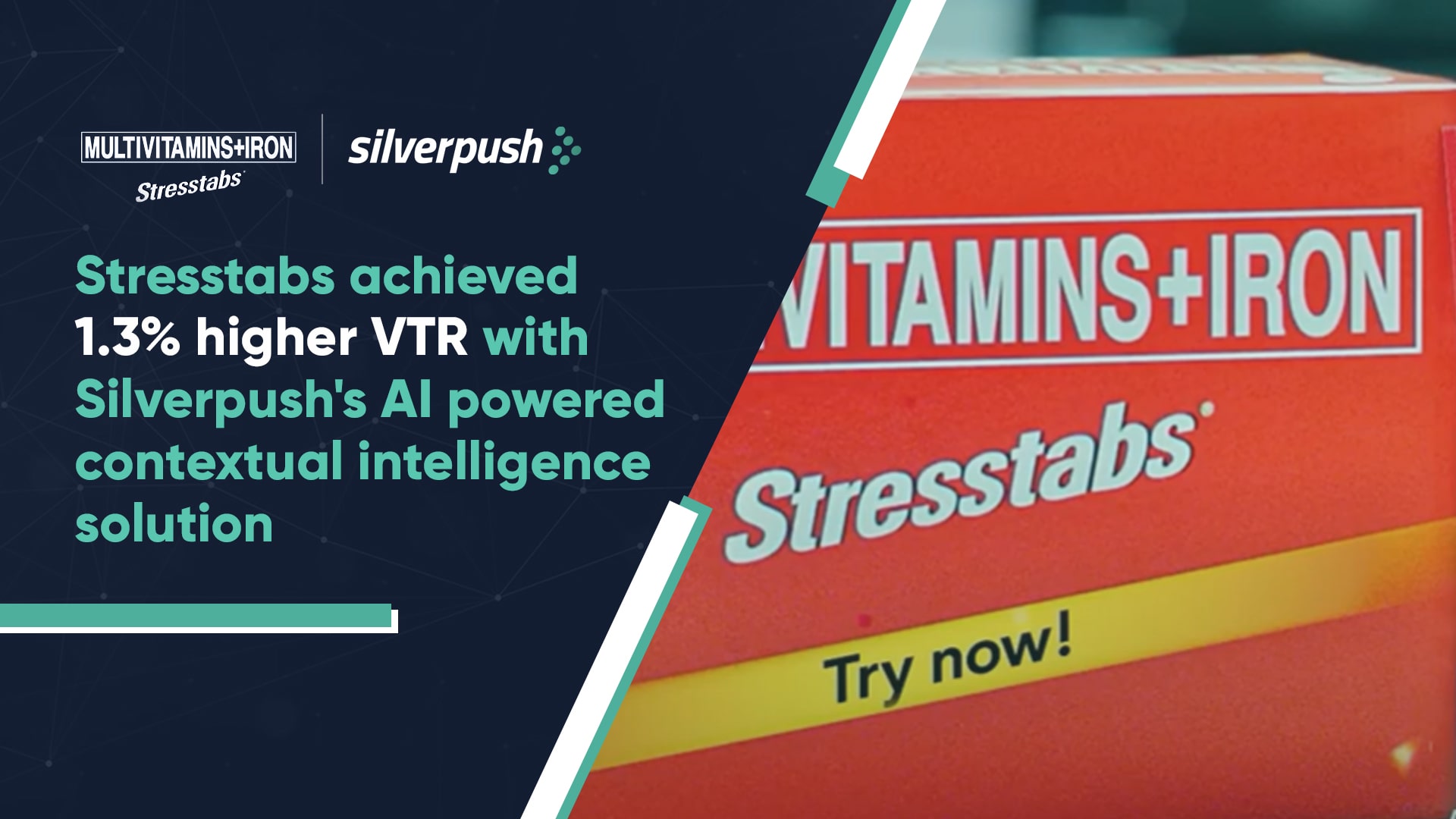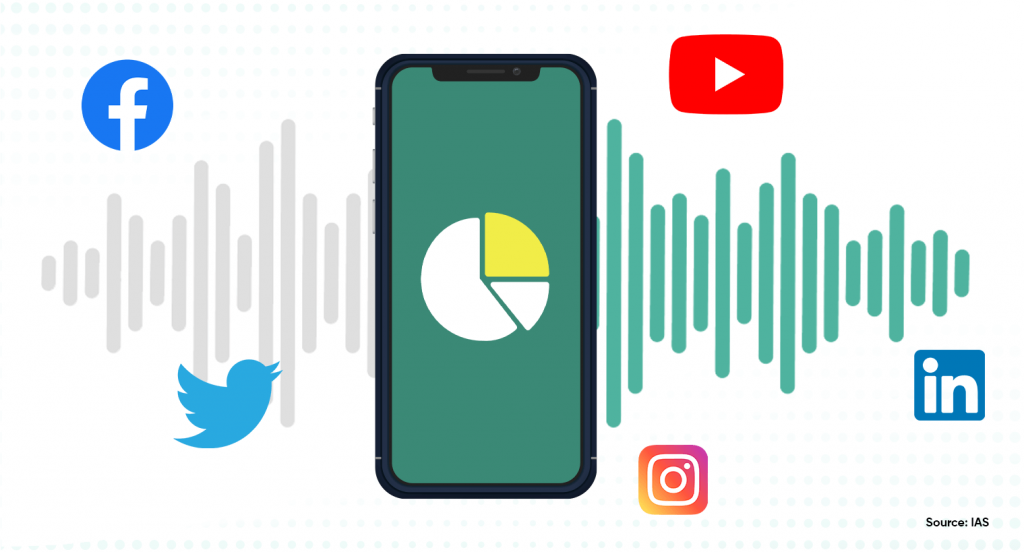Unlocking the Power of First-Party and Zero-Party Data: Future of Privacy-Focused Advertising
PUBLISH DATE: 30 March 2023
In 2023 expected data collection from the first-party and zero-party is 118 zettabytes.
Data is the backbone of modern marketing, providing brands with valuable insights into consumer behavior and enabling them to craft targeted campaigns that resonate with their audience.
However, the landscape is rapidly changing, with evolving privacy policies making it increasingly challenging to collect and utilize data in a manner that respects user privacy.
This new reality has given rise to contextual advertising, which offers a less invasive approach and is better aligned with evolving consumer preferences.
Also, inclining advertisers toward the first-party and zero-party data. By leveraging first-party and zero-party data, brands can still gain a deep understanding of their audience and create campaigns that deliver better results while abiding by the user’s privacy.
It’s interesting to note that contextual advertising is expected to witness significant growth in the coming years, with worldwide ad spending projected to reach 228 billion US dollars by 2023. One of the main drivers behind this growth is Google’s plan to phase out third-party cookies, which have traditionally been the cornerstone of behavioral targeting.
While third-party cookies have been an effective tool for advertisers to target consumers based on their browsing behavior, there has been growing concern over user privacy and data protection. As a result, privacy-focused browsers like Firefox and Safari have already blocked third-party cookies over a decade ago.
Explore the Alternatives for Third-Party Data Targeting
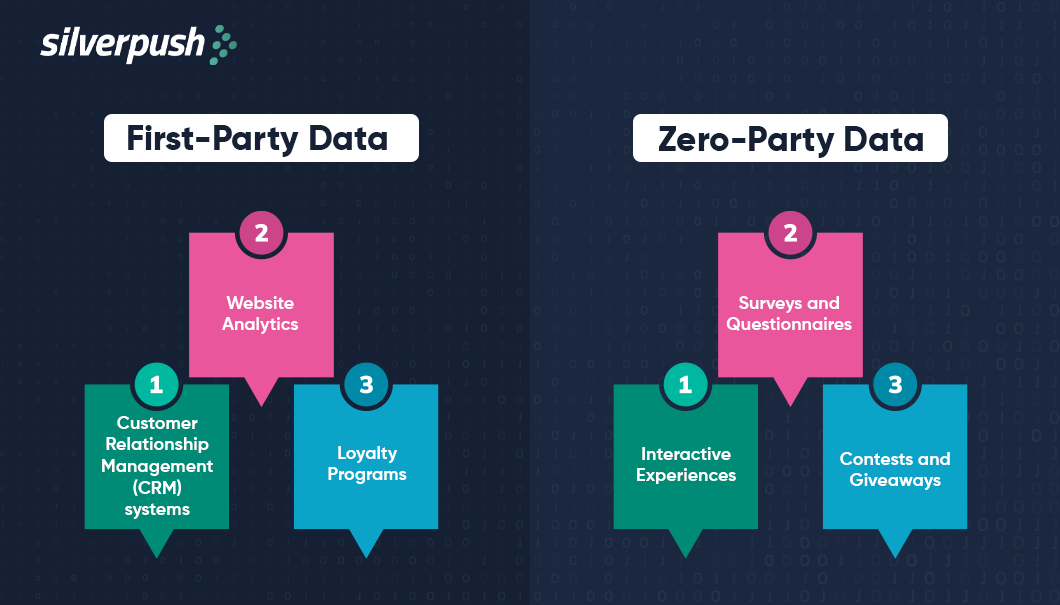
The advertising industry has entered an experimental era. Marketers use the hit-and-trial advertising approach. They have incorporated contextual advertising into their behavioral targeting and have begun to favor first-party and zero-party data.
But what are Zero and First-Party Data?
When information is shared with the intention and acknowledgment of the user it is zero-party data. This type of data includes customer preferences, interests, and opinions. Zero-Party Data can be collected in the following ways.
1. Surveys and Questionnaire: Brands ask questions or perform a survey to know the interests and opinions of the audience. For example, Nike surveyed to know which is the audience’s favorite shoe type among Air Force, Air Max, and Air Yeezy. This survey will give a fair idea about the audience’s interest in their product and with further analysis, Nike can target specific shoe ads to the specific user demographic.
2. Interactive Experiences: Companies can offer interactive experiences, such as quizzes or polls, that require customers to provide information about themselves. This can be a fun and engaging way for customers to share information with a company.
3. Contests and Giveaways: This way brands can easily promote themselves and collect the user’s data. For example, An FMCG brand posted a giveaway on Instagram where the user had to enter their details and tag 3 more people in the comment section. Through comments, the brand could get a large audience base and details of some users. Zero-party data is valuable because customers provide it voluntarily when they want to engage with a company.
According to 85% of marketing company respondents, zero-party data is essential for delivering effective tailored experiences. First-party data is passively collected by the brands. This data can include customer names, email addresses, purchase history, and website browsing behavior. The different methods through which first-party data can be collected is:
1. Website Analytics: Companies can use tools like Google Analytics to track website visitors and their behavior on the site, such as what pages they visit, how long they stay on each page, and whether they make a purchase.
2. Customer Relationship Management (CRM) Systems: Companies can collect information about their customers, such as their contact information, purchase history, and preferences, through their CRM systems.
3. Loyalty Programs: Companies can collect data on their customers through loyalty programs, which can track purchase behavior and offer personalized recommendations and promotions. First-party data is valuable because it helps companies understand their customers and provide more personalized marketing and customer experiences.
What’s the Key Difference Between First-Party and Zero-Party?
The key difference between first-party and zero-party data is the method of data collection. The method of data collection impacts user engagement and accuracy.
1. User Engagement: User engagement is much higher with the brand in zero-party because the consumer is directly engaged and has been sharing their information with consent. On the other hand, first-party data is passively collected. The data collected is based on the user’s interaction with the brand.
2. Accuracy: First-party data will involve analytical tools, to get precise information. The data is collected on behavioral targeting strategy which implies the use of analysis at the end. Whereas, the data provided by the user will be correct because the user wants to engage with the brand and wishes to avail the value provided by them in exchange for their information.
Conclusion
Overall, both types of data are valuable for companies as they allow for better understanding and targeting of customers. However, zero-party data is more likely to result in high-quality, personalized customer experiences as it is based on direct input from customers themselves. Another reason that would lead to the rise of zero-party data would be the consent of the user. Every day people are becoming conscious of their information which has already led to the phase-out of third-party data. Since the information gathered will be with the consent of the user, the privacy issues would be eradicated.
The Demise of Third-Party Cookies: Can AI Advertising Fill the Void?
PUBLISH DATE: 15 March 2023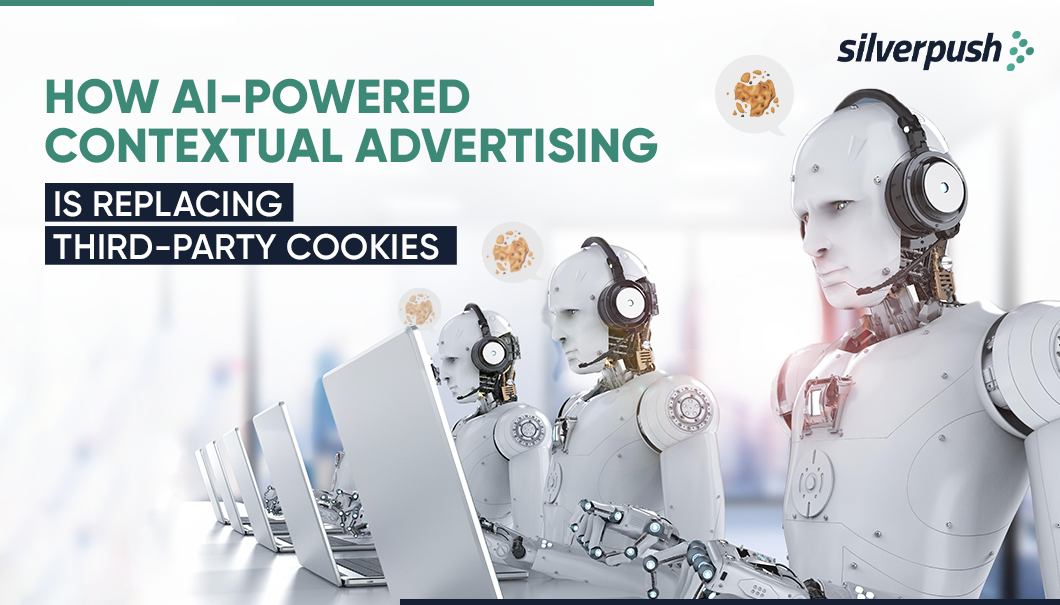
As third-party cookies crumble, AI advertising is gearing up for its time in the spotlight – get ready for the rise of the machines in the ad tech industry!
The importance of third-party cookies can be well understood by digital marketers who rely on these small pieces of information to serve personalized ads to their audiences.
The usage of user data without their consent or knowledge has sparked significant debates surrounding consumer privacy, with users, legislators, and companies all expressing concerns about the potential impact on individual confidentiality.
Although cookies have been valuable for advertisers and marketers, their usage is now being closely examined as users demand more control over their online data, and companies face increasing pressure to prioritize consumer privacy. Major web browsers like Mozilla Firefox and Safari have already banned third-party cookies, and Google Chrome will soon follow suit.
To navigate the post-cookie world, advertisers will need to explore alternative options like Artificial Intelligence (AI), which is likely to replace cookies. AI-powered contextual advertising has emerged as a powerful tool for innovation, with companies using it for management, robotics, and marketing.
What Challenges are Faced by Marketers Due to Third-Party Cookies?
Ad tech companies often use a technique called fingerprinting to track users and deliver personalized ads. Fingerprinting relies on third-party cookies to generate user-specific browser ID tags.
When a user accesses a website with a cookie-based ad, a tracking pixel embedded in the ad collects the user’s browser tag and sends it to the advertiser’s server. Ad tech companies then use this information to develop user profiles and track browsing history, purchases, and other personal information.
However, users often have little knowledge of what personal information is collected and have limited control over preventing unwanted data collection unless they manually disable cookies on their browsers.
Eliminating the Use of 3rd Party Cookies
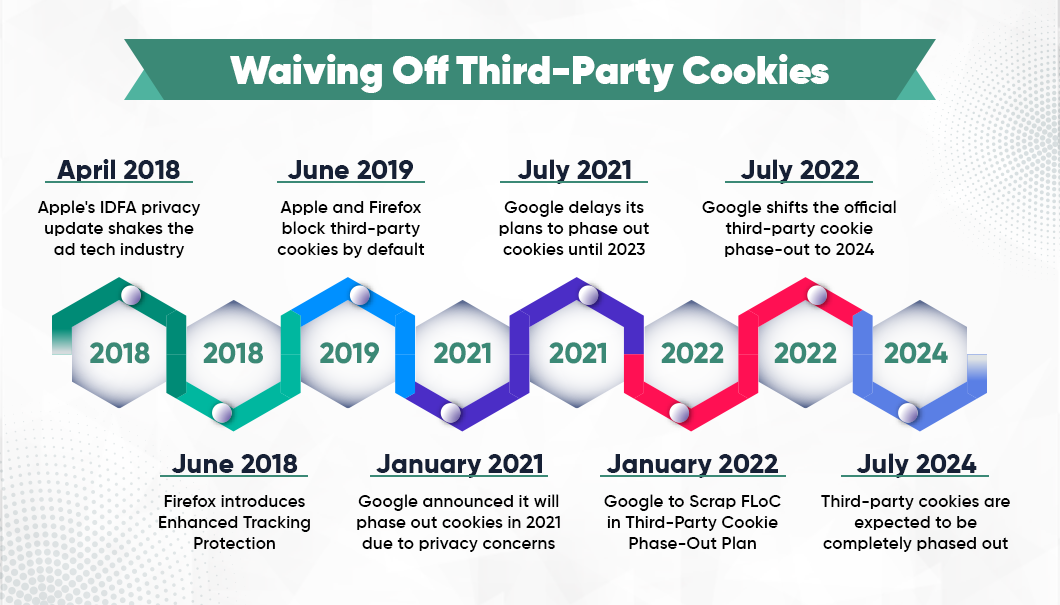
As privacy concerns grow, more companies are opting out of using third-party cookies. Major web browsers like Safari and Firefox have already blocked cross-tracking third-party cookies, and Google plans to phase them out on Chrome by 2024 to address user demands for greater privacy, transparency, choice, and control over their data.
Advertisers, who rely heavily on third-party cookies for data collection, will be significantly impacted by this change and must find new ways to access similar sets of data.
The most comprehensive data regulation to date is the General Data Protection Regulation (GDPR), which came into effect in 2018 within the European Union. It has set a high bar for data protection standards globally, as it emphasizes the importance of user consent and data transparency, putting greater control over personal data in the hands of users.
The Future of AI Advertising: Moving Beyond Third-Party Cookies
With the phasing out of third-party tracking cookies, advertising agencies are turning to contextual advertising as a strategy for targeting users based on their online experience categories, rather than behavioral advertising. Contextual targeting is being seen as a brand-safe, future-proof, and successful cookieless targeting option.
According to market data, the global contextual advertising market is predicted to reach $376.2 Billion by 2027, indicating the increasing popularity of this strategy.
Companies worldwide are redirecting their marketing resources toward developing a strong contextual strategy to adapt to the changing landscape of digital advertising.
Statistics that highlight the importance of contextual advertising:
1. Context is so powerful that 49% of brand marketers are looking to contextual advertising to replace cookies.
2. 79% of consumers are more comfortable seeing Contextual than behavioral ads.
3. Between 2020 and 2027, contextual advertising spending is expected to grow 13.3 percent annually.
4. 49% of US marketers surveyed are using contextual marketing today.
5. In the UK, 32% of marketers use contextual marketing, while 36% use demographic targeting.
Silverpush Leads the Way in AI-Powered Contextual Advertising for a Cookieless Future
As the digital advertising industry transitions to a cookieless future, contextual targeting is emerging as a powerful solution for advertisers looking to engage with their target audience.
Silverpush, one of the leading ad tech companies in the world recognized the limitations of third-party cookies years ago and developed their AI-Powered solution, Mirrors, which has been providing contextual advertising solutions on platforms like YouTube, OpenWeb, Meta, and CTV since 2012.
Mirrors use privacy-safe and contextual targeting solutions to deliver personalized ads to the target audience without relying on their data.
What Makes Mirrors Unique?

Mirrors’ AI-powered technology identifies key contexts and other factors for more precise targeting. Its unique custom identifying capabilities ensure that reach is not duplicated, and a unified approach is used for content-aligned ad placement, brand safety, and custom brand suitability.
The ads are placed in a brand-safe environment and are relevant to the brand, ensuring a positive and effective advertising experience for both the advertiser and the audience.
If you’re interested in learning more about how Silverpush can help you prepare for the cookieless future and advertise successfully, fill out the available form on the right and our team will reach out to you.
Targeting Back-to-School Shoppers with Contextual Advertising
PUBLISH DATE: 07 March 2023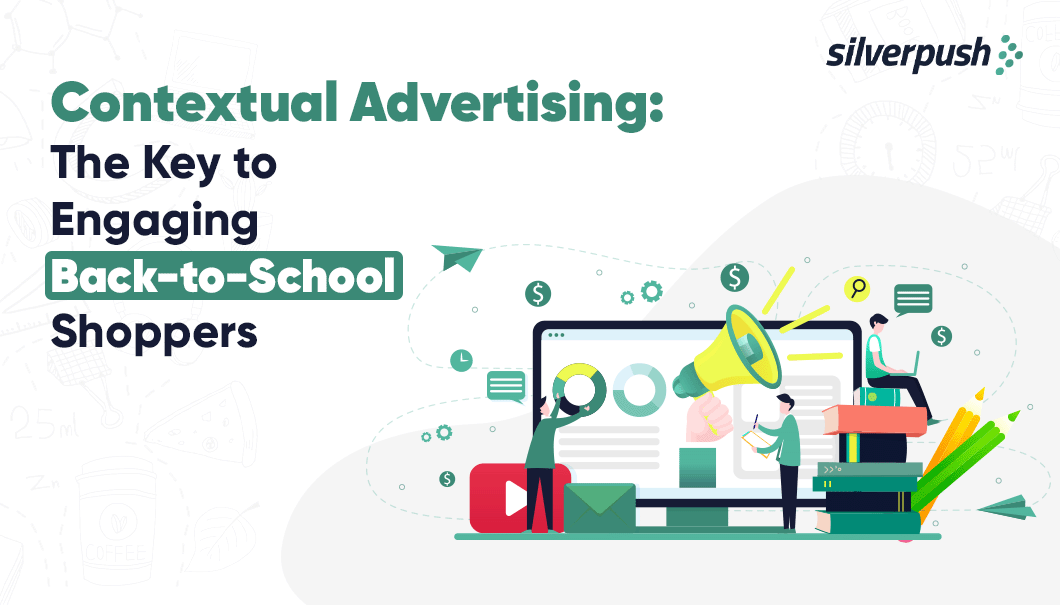
Want to get straight A’s in your back-to-school campaigns? Contextual advertising can help!
It’s not just students who are excited about the back-to-school season; the outlook for marketers is positive too.
Ad spending during the back-to-school season in 2022 was approximately $110.7 billion, and it’s expected to increase this year, presenting a massive opportunity for advertisers to connect with their target audiences.
However, the question remains: how can marketers effectively reach their target audiences during this busy season?
With the ban on third-party cookies, contextual advertising has become one of the most preferred targeting methods. This presents a huge opportunity for brands during the back-to-school season to reach their relevant audience at the right moment and place, leading to successful campaigns.
In this post, we’ll share how brands can leverage contextual targeting methods to deliver more effective campaigns that reach the right people in high-impact environments.
What is the Back-To-School Season?
The back-to-school season marks the time just before the start of the new academic year when students and teachers return to school after the summer break.
This season usually begins in August or September in many countries, including the United States, Canada, and parts of Europe, and signifies the start of the academic year for numerous schools and universities.
During this time, students and parents typically purchase new school supplies, clothing, and backpacks in preparation for the upcoming school year. As such, the back-to-school season is a crucial time for advertisers as it signifies a significant period of spending for parents, students, and educators alike.
How can Brands Leverage the Back-to-School Opportunity to Reach their Relevant Audience?
The back-to-school season is a significant opportunity for brands to connect with consumers who are preparing to return to school, college, or university.
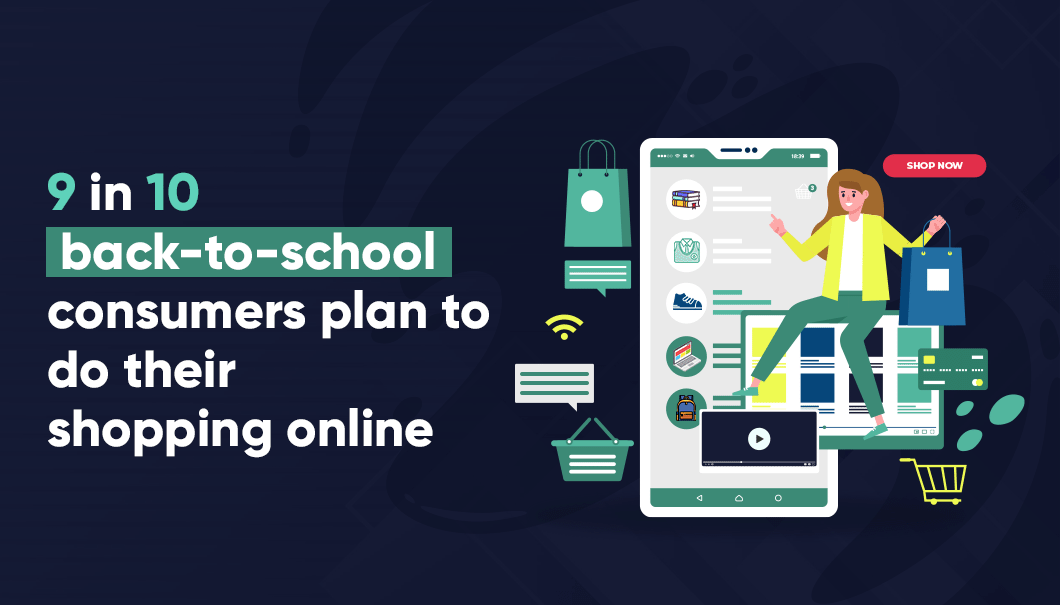
Research indicates that contextual ad targeting influences purchase decisions, with 93% of back-to-school consumers finding it important that ads they see are relevant to the content they are viewing.
Additionally, 72% of back-to-school consumers typically consume back-to-school content on social media, and 60% find online advertising helpful in making their purchasing decisions.
To effectively leverage this season, advertisers should focus on certain categories of products, such as school supplies, technology, and clothing, and target specific demographics, such as college students, high school students, or parents with school-aged children.
Advertisers may utilize a variety of channels to reach their target audience, including video advertising, social media advertising, display advertising, and more.
However, it’s even more critical to be available on the platforms where the majority of your audience is. By creating relevant and impactful campaigns that reach the right people in high-impact environments, brands can successfully tap into the back-to-school market and connect with their target audiences during this critical period.
Be Present Where your Audience Spend Time Online
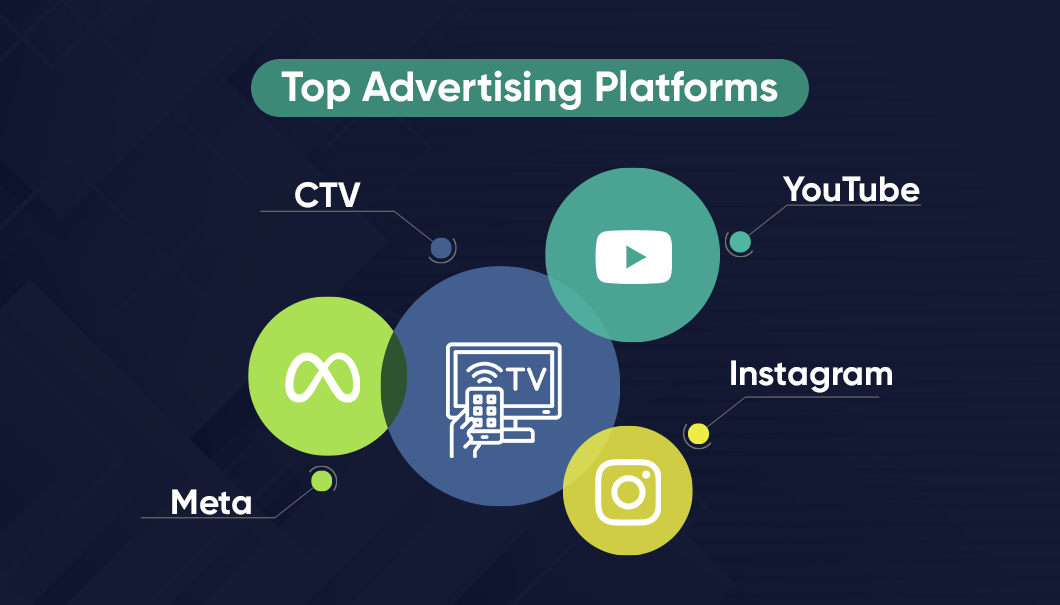
In today’s digital age, understanding consumer habits is crucial for brands looking to capture the attention of their target audience during the back-to-school season.
To be successful, it’s essential to know where parents and students are spending their time and be present on those channels. In recent years, there has been significant growth in the adoption and use of different platforms and channels like CTV and OTT advertising. Streaming, for example, has increased 266% globally in the last three years.
Popular social media channels like Meta, Instagram, and YouTube, with 1.7 billion unique monthly visitors, are also highly effective platforms for reaching out to consumers during the back-to-school season.
It’s important to stay up-to-date with emerging channels and their usage patterns to leverage them effectively when running marketing campaigns. Creating a multi-channel strategy that encompasses native, display, video, and connected TV (CTV) advertising can help brands reach parents, teachers, and students throughout the entire funnel, creating a cohesive story across channels.
In summary, brands that understand consumer behavior and adopt a multi-channel approach can effectively leverage the back-to-school season to reach their target audience and promote their products and services.
How Can Silverpush’s AI-Powered Contextual Targeting Technology Help?
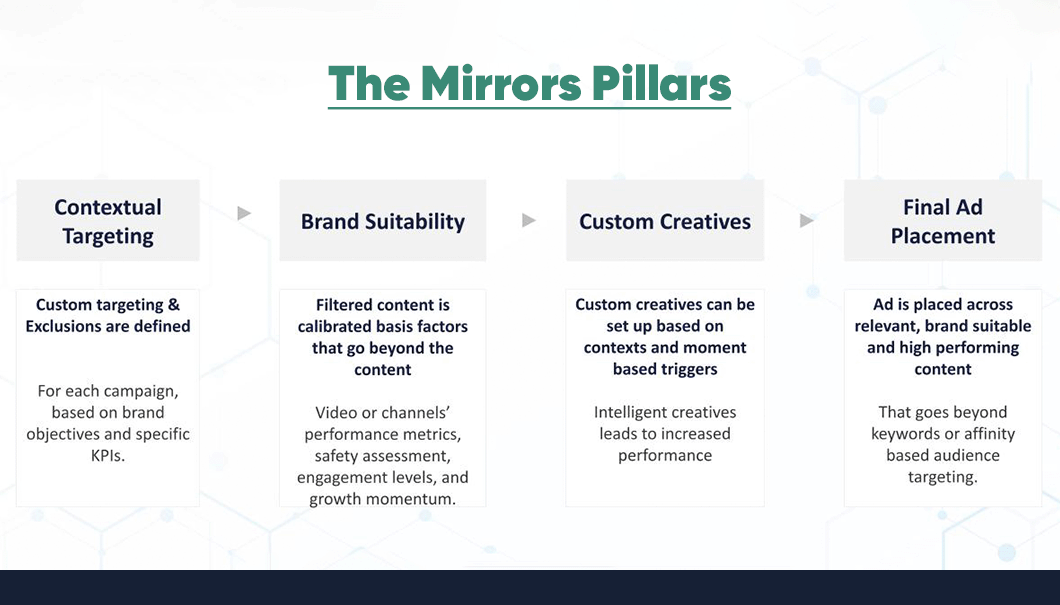
Silverpush’s flagship product, Mirrors is an AI-powered contextual targeting technology that helps brands connect with their target audience during the back-to-school season.
This season is a time when parents, students, and teachers are actively searching for products such as shoes, makeup, books, stationery, clothing, footwear, electronics, furnishings, and cleaning supplies.
Mirrors uses advanced contextual technology that can identify celebrities, brands, objects, and actions to deliver ads to a brand-safe environment.
By using contextual targeting, Mirrors ensures that ads are delivered to the right audience at the right time and place, without the need to rely on personal data.
This technology provides a nuanced level of targeting, enabling brands to place back-to-school ads on pages that align with the content their target audience is engaging with.
Additionally, Mirrors’ custom contexts identification capabilities ensure that reach is not duplicated, and a unified approach is followed for content-aligned ad placement, brand safety, and custom brand suitability.
By leveraging Silverpush’s Mirrors technology, brands can maximize the impact and effectiveness of their back-to-school campaigns and connect with their target audience in a meaningful way.
The Rise of Programmatic Advertising: Top 5 Trends Shaping the Industry
PUBLISH DATE: 28 February 2023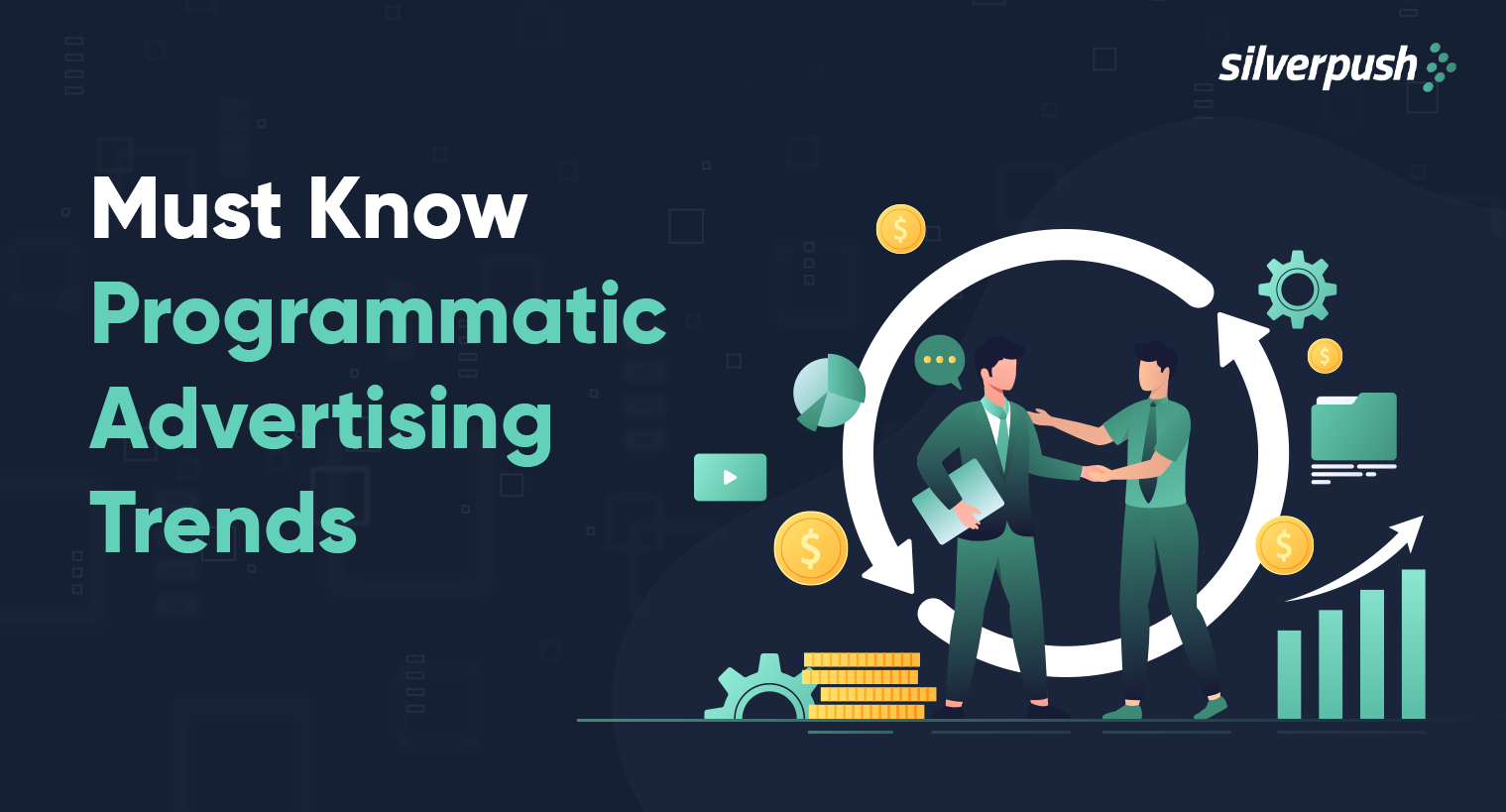
Want to know where programmatic advertising is headed? Check out the blog which talks about the top 5 programmatic advertising trends to keep an eye on, including the rise of connected TV, the importance of privacy and transparency, and more.
Programmatic advertising has revolutionized the world of digital marketing by utilizing automation to buy and sell digital ad space. This approach has replaced the traditional manual process that relied on human interaction and negotiation between publishers and marketers.
The use of data-driven strategies has enabled programmatic advertising to streamline and accelerate ad buying processes, resulting in increased campaign efficiency.
Recent estimates indicate that programmatic advertising generated 418 billion U.S. dollars in 2021 and is projected to reach 725 billion by 2026. Given these impressive figures, it’s natural to wonder if programmatic advertising is the future of advertising.
To answer this question and stay up-to-date with the latest trends, let’s take a closer look at the new trends in programmatic advertising.
5 Recent Programmatic Advertising Trends
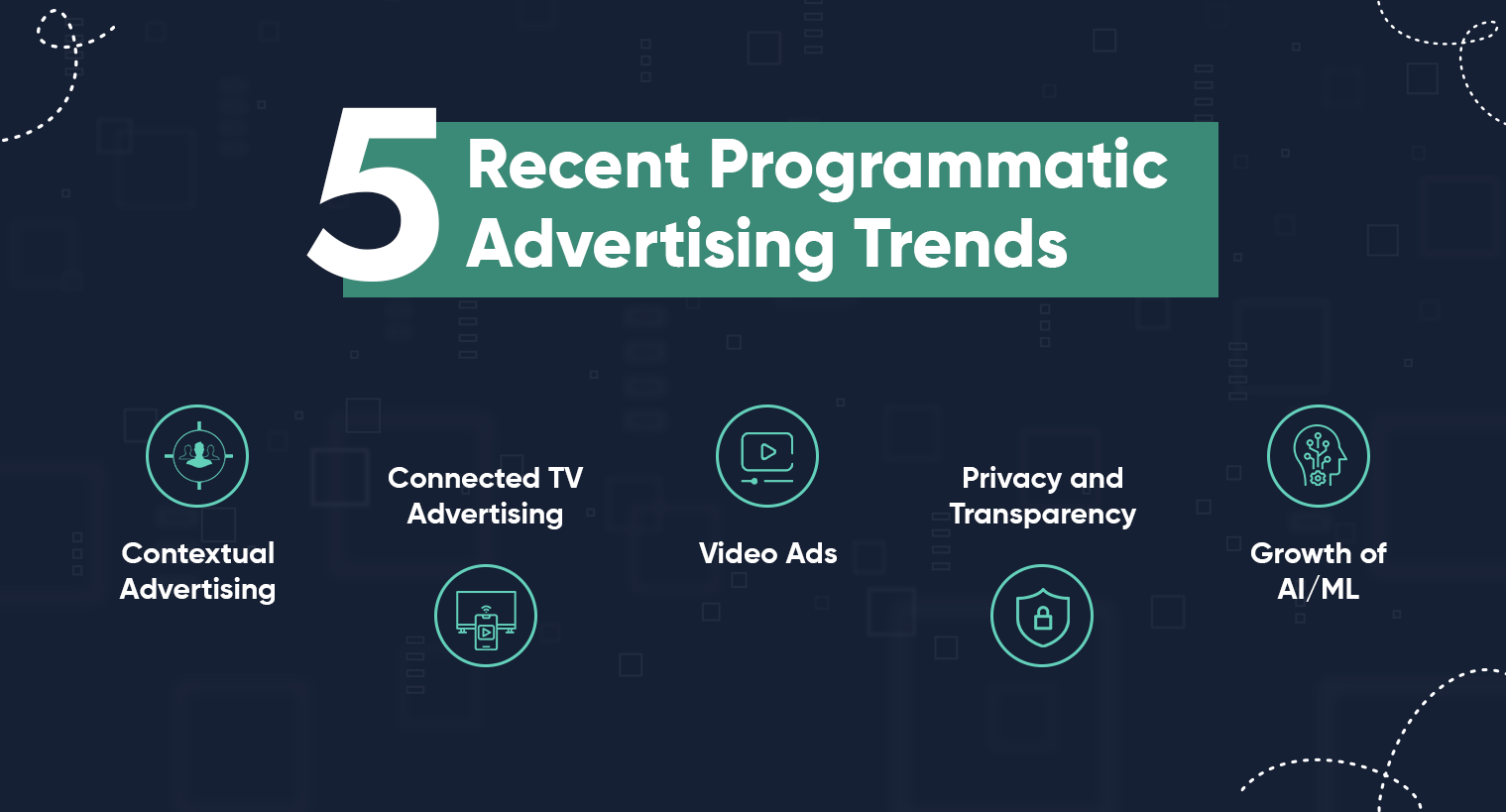
1. Contextual Advertising Stands Strong
Contextual targeting is a straightforward yet powerful method of advertising that continues to be a key programmatic trend to watch, particularly in light of the decline of cookies. In digital advertising, contextual targeting is becoming increasingly important as ads are placed based on the context of the website, rather than relying on a user’s online behavioral data.
With contextual targeting, advertisers can reasonably assume that those who see their ads are more likely to be interested in them due to the web page’s context. As users have grown weary of seeing irrelevant ad creatives in inappropriate locations, banner blindness has become more prevalent. To address this, advertisers must enhance the ad experience by using personalized and relevant ads in the right context, thereby improving engagement and driving better results.
Also read: https://www.silverpush.co/blogs/what-is-programmatic-advertising/
2. Connected TV Advertising Continues to Grow
Connected TV usage among millennials is expected to grow from 60.5 million monthly users in 2022 to 62.6 million by 2025.
Prior to Covid, 76% of U.S. households had at least one connected device, with a total of 12.5 billion use hours per month. Following the pandemic, this figure increased by 81%, resulting in 4 billion hours of CTV use every week.
As a result, buyers are planning to allocate more of their advertising budget to CTV in 2023, with IAB reporting that ad spend is being reallocated from broadcast (53%) and cable TV (52%) advertising to CTV.
This makes CTV one of the most intriguing programmatic advertising trends to watch in 2023. Advertisers must pay close attention to the procurement process, methods, and measurements that need to be reevaluated in response to this trend. Although CTV advertising is still in its early stages, those who adapt and stay ahead of the curve will benefit from the rewards.
3. Video Ads
The popularity of video content continues to soar, with video consumption expected to account for 82% of consumer internet traffic this year. As a result, video ad spending is projected to increase year after year. In 2021, programmatic video advertising spending in the United States reached an estimated 52.17 billion U.S. dollars, and this figure is expected to grow even further to reach 74.88 billion dollars by the end of 2023.
Notably, video advertising is considered to be the most impactful format for high-impact display ads, contributing to the growth in programmatic video spend. Given that programmatic video spending is expected to represent the majority of total programmatic digital display spending in the US this year, it’s clear that automated video ad buying has become the standard approach for distributing digital video commercials.
4. Growing Need for Privacy and Transparency
As privacy and transparency become top priorities, marketers must adapt to a world without third-party data. With the rise of new privacy laws like GDPR and the California Privacy Act, traditional tracking methods are no longer viable. While advertisers can still obtain user data with their consent, relying solely on tracking cookies to target and personalize ads is no longer an option. The recent moves by Apple, Firefox, and Google to end third-party cookie support further emphasize the need for innovative and reliable workarounds in programmatic advertising. At this critical juncture, it’s time for marketers to prioritize transparency and build trust with their audiences by adopting new, privacy-first strategies.
5. Use of AI/ML Rapidly Expands
The rise of Artificial Intelligence and Machine Learning (AI/ML) is revolutionizing programmatic advertising by enhancing targeting, optimization, and prediction capabilities. By leveraging AI algorithms, brands can now automate and optimize their ad-buying process to ensure that their messages reach the right people at the right time.
As AI and ML technologies continue to advance, programmatic advertising platforms are incorporating these tools to improve ad targeting, creative optimization, and budget allocation in real time. With AI/ML-driven automation, brands can create personalized experiences for each customer, as seen in Overstock’s successful implementation of AI for individualized customer experiences. The increasing use of AI/ML in programmatic advertising is paving the way for more efficient and effective ad campaigns, providing brands with a competitive edge in the digital marketing landscape.
Conclusion
Programmatic advertising is an ever-evolving field that requires constant attention and adaptation to stay ahead of the curve. From the growing need for privacy and transparency to the increasing use of AI and Machine Learning technologies, these five programmatic advertising trends are transforming the digital advertising landscape. As programmatic advertising continues to evolve, it’s crucial for brands to stay up-to-date on the latest trends and developments. By doing so, they can ensure that their advertising campaigns remain relevant, engaging, and effective in today’s rapidly changing digital marketing landscape.
Study Reveals 40% of Marketers Anticipate Rise in Brand Safety Concerns
PUBLISH DATE: 20 February 2023
Mediaocean, a major multi-channel advertising platform, has recently published its 2022 Market Report and 2023 Forecast report, which highlights the ongoing worries about the safety and appropriateness of media environments.
According to the report, more than half of those surveyed anticipate their brand safety concerns to remain the same in the coming year, while almost 40% expect these worries to rise in 2023. Only a small percentage of respondents expect these concerns to diminish.
Brands have become increasingly worried about brand safety, with 75% of them experiencing a brand safety incident within the last year.
As the concerns about brand safety continue to rise, it raises the question of how brands can address these concerns and ensure brand safety and suitability on platforms such as YouTube, social media, and the Open Web. Let’s find out!
What are the Key Considerations to Ensure Brand Safety?
It is a fundamental aspect of human behavior to make judgments about people based on their company, and the same applies to brands and products. Whether intentionally or subconsciously, consumers evaluate brands based on the content that they associate with. Therefore, brands must safeguard their online image by utilizing sophisticated hyper-contextual targeting solutions.
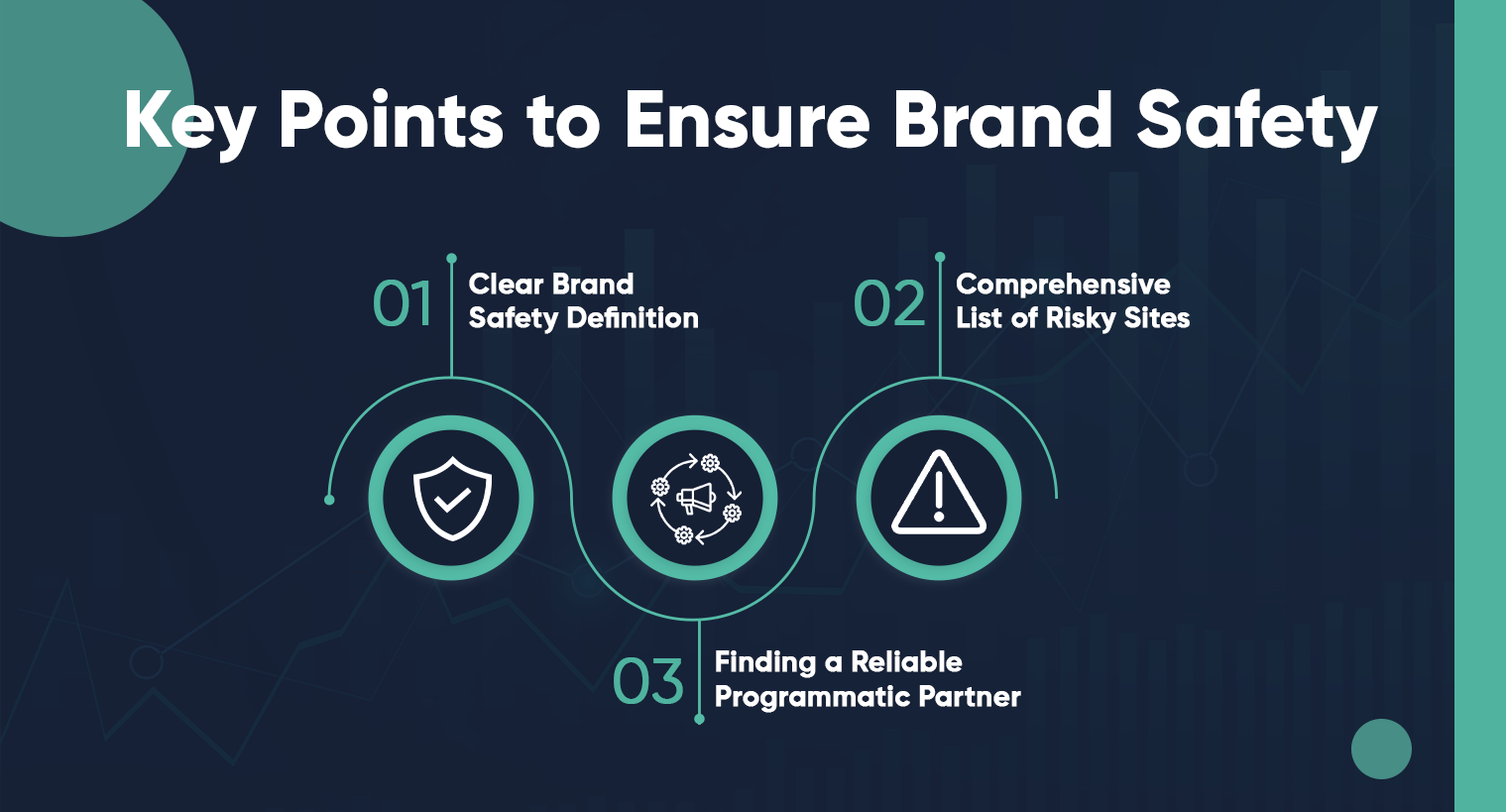
Here are four essential factors that brands should consider to safeguard their image:
1. Develop a Clear Definition of “Brand Safety”
To implement brand-safe advertising, it is crucial to establish a set of guidelines and parameters that everyone within the organization can agree on. It is important to craft a clear definition of what constitutes brand-safe content and what is considered risky or unsafe. Examining industry-standard definitions of brand safety can serve as a good starting point.
2. Create a Comprehensive Blocklist of Sites
A blocklist is a list of websites or content that you do not want your ads to be displayed alongside. It is also referred to as a negative targeting, exclusion list, or blacklist. Maintaining an updated document of blocklisted sites is essential to exclude any undesirable topic, content, or website that may be detrimental to your brand’s image. By doing so, you can ensure that your ads are only displayed on sites that align with your brand’s values and messaging.
3. Choose a Programmatic Partner that Prioritizes Brand Safety
Selecting the right programmatic partner is crucial to ensuring that your brand remains safe online. At Silverpush, our AI-powered contextual solutions are specifically designed to address brands’ concerns about online advertising without sacrificing reach.
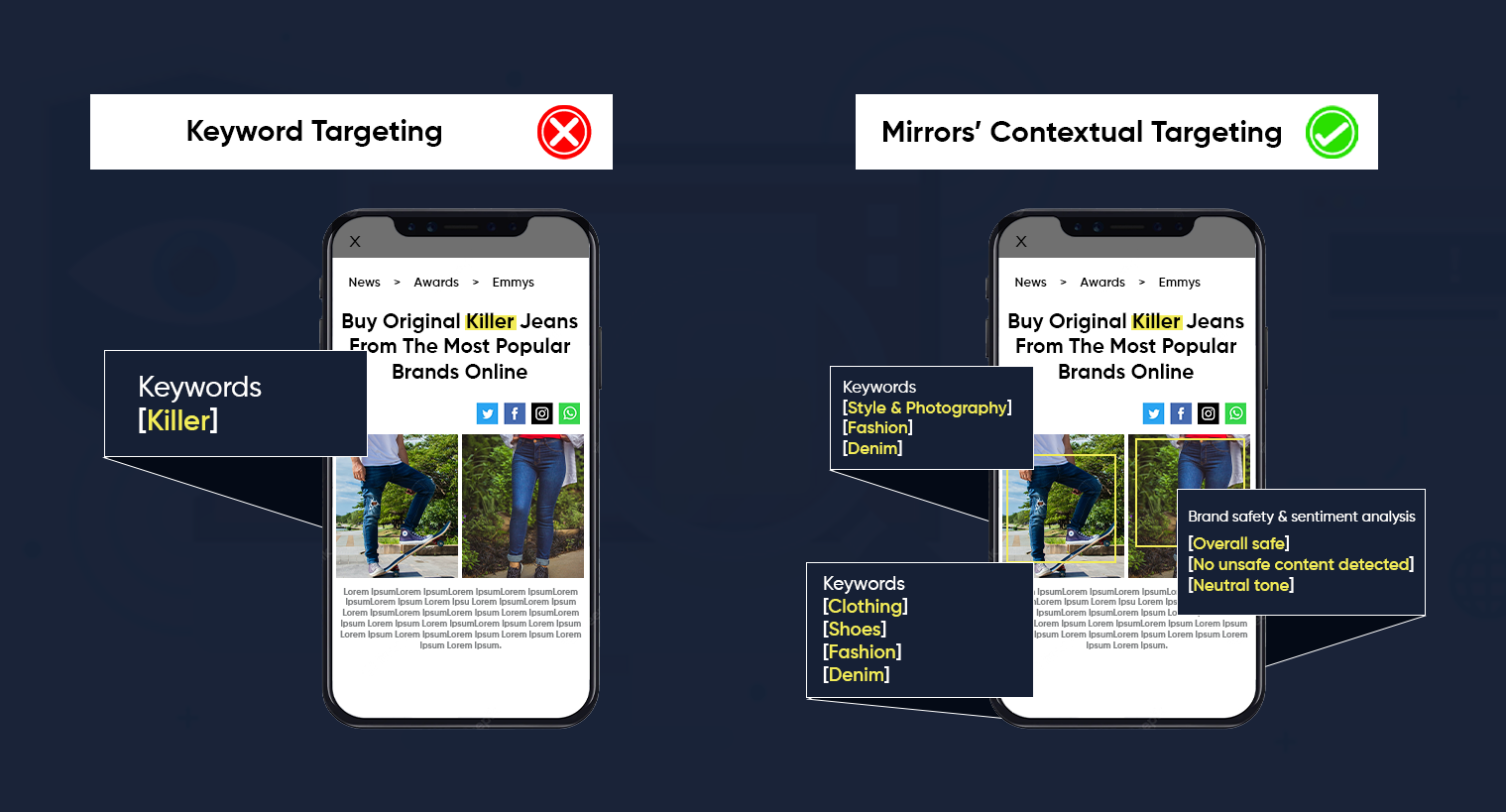
How does our brand safety strategy work?
Mirrors’ deeply trained proprietary AI models identifies custom-defined unsafe contexts in content to contextually filter content. These placements are classified into many levels of content, including smoking, adult, violence, wrecks, arms, terrorism, and others.
4. Monitor your Campaigns Closely
Digital advertising allows you to track your results in real time, enabling you to identify and address any brand safety concerns promptly. Keep a close eye on your campaigns to identify any potential bot traffic or fraudulent activity. If you spot any issues, make necessary adjustments to your campaign settings to safeguard your brand’s reputation. Monitoring your campaigns is crucial to ensuring that your ads are appearing in safe and suitable environments, which is essential to maintaining a positive brand image.
Why is Brand Safety Important in Advertising?
Brand safety in advertising is critical to maintaining a positive brand image and protecting brand equity. In a recent survey, 90% of consumers stated that they believe brands are responsible for ensuring that their ads appear alongside safe content.
Consumers view the content their favorite brands appear alongside as an implied endorsement of that content. Negative associations can damage a brand’s reputation and have long-term effects on its equity. Therefore, brands need to prioritize brand safety in advertising to ensure that their ads are only displayed in suitable environments that align with their values and messaging.
Here are a few pointers on why brand safety is important in advertising:
1. Establishing a Positive Brand Reputation
Maintaining a good brand reputation is essential for the success and long-term viability of a business. Consumers are more likely to interact with a brand when its ads appear next to legitimate and appropriate content. A study found that 61% of users believe that both the brand and the hosting platform share equal responsibility for keeping content safe. Failure to prioritize brand safety can result in consumers losing trust in the brand and stopping its use.
2. Making a Strong First Impression
For new or smaller brands, a single incident of their ads appearing next to fake news or offensive content can significantly damage their reputation and credibility. Even established brands may suffer losses in ad revenue and potential negative associations when their ads appear next to inappropriate content. Therefore, brands must prioritize brand safety in their advertising efforts and take proactive measures to ensure that their ads only appear next to suitable and reputable content.
Safeguard your Brand Image with Silverpush’s Hyper Contextual Solutions
In today’s digital landscape, brand safety is crucial for maintaining a positive brand image and avoiding potential reputational damage. Silverpush, one of the leading tech companies understands the importance of safeguarding your brand and has developed advanced contextual advertising solutions to help ensure brand safety and drive maximum ROI.
Our AI-powered Mirrors identifies key contexts and filter custom-defined unsafe contexts in streaming video, allowing us to classify videos into different levels of content safety. We also use text and sentiment analysis, engagement metrics, and organic influence to ensure brand suitability.
Partnering with a programmatic partner like Silverpush that prioritizes brand safety can help you maintain your brand’s reputation and build trust with your audience. Contact us today to learn more about how we can help you protect your brand image and achieve your business goals.
The Cookieless Future: How to Thrive in the Life After Cookies?
PUBLISH DATE: 08 February 2023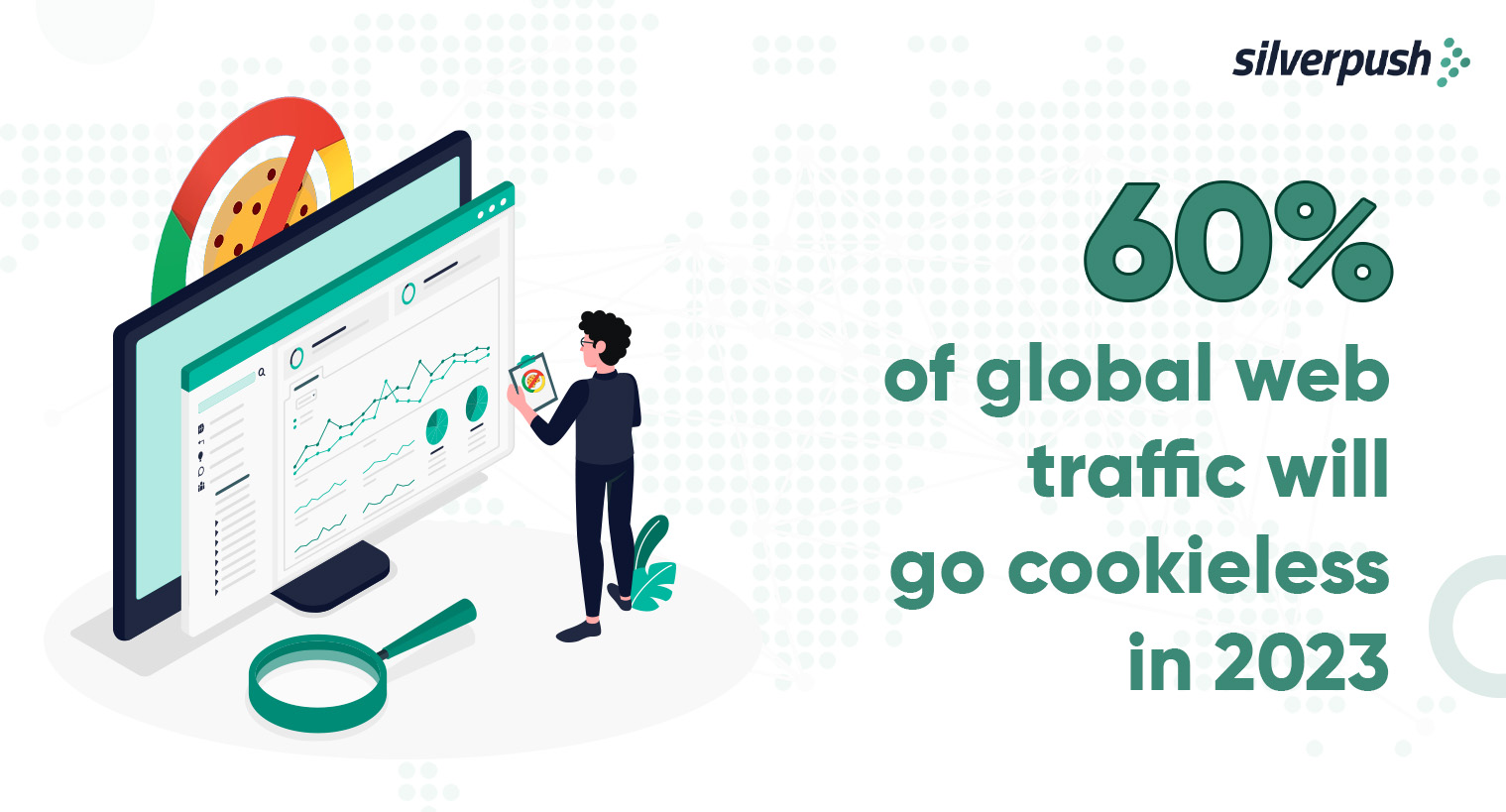
With 60% of global web traffic going cookieless by 2023. Advertisers are still not clear on how to navigate the landscape in the cookieless future. Silverpush’s AI solutions will help fill this gap by providing alternative targeting methods to advertisers & publishers.
Going back to 1992, the year when Netscape made a significant impact in digital history by inventing cookies, allowing websites to save user information and preferences.
This marked a turning point for the digital advertising industry which experienced a revolution as cookies soon became the lifeblood of the online ecosystem. The digital advertising market is currently worth $681.39 billion, and cookies play a major role in its rapid expansion.
As we move forward to 2023, third-party cookies have become a menace for advertisers and publishers who are now looking for alternatives to reach their audience with cookieless advertising solutions.
What Does the Removal of Third-Party Cookies Mean for Advertisers and Publishers?
Today, 86% of US marketers rely on third-party cookies to gain information about user behavior. The impending elimination of third-party cookies presents a major challenge for advertisers to effectively track user behavior and deliver personalized ads.
This change has the potential to negatively impact the digital advertising industry, reducing its efficacy. Publishers will also face difficulties in monetizing their websites, potentially leading to a reduction in the quality of online content as they explore alternative revenue streams like subscriptions or paywalls.
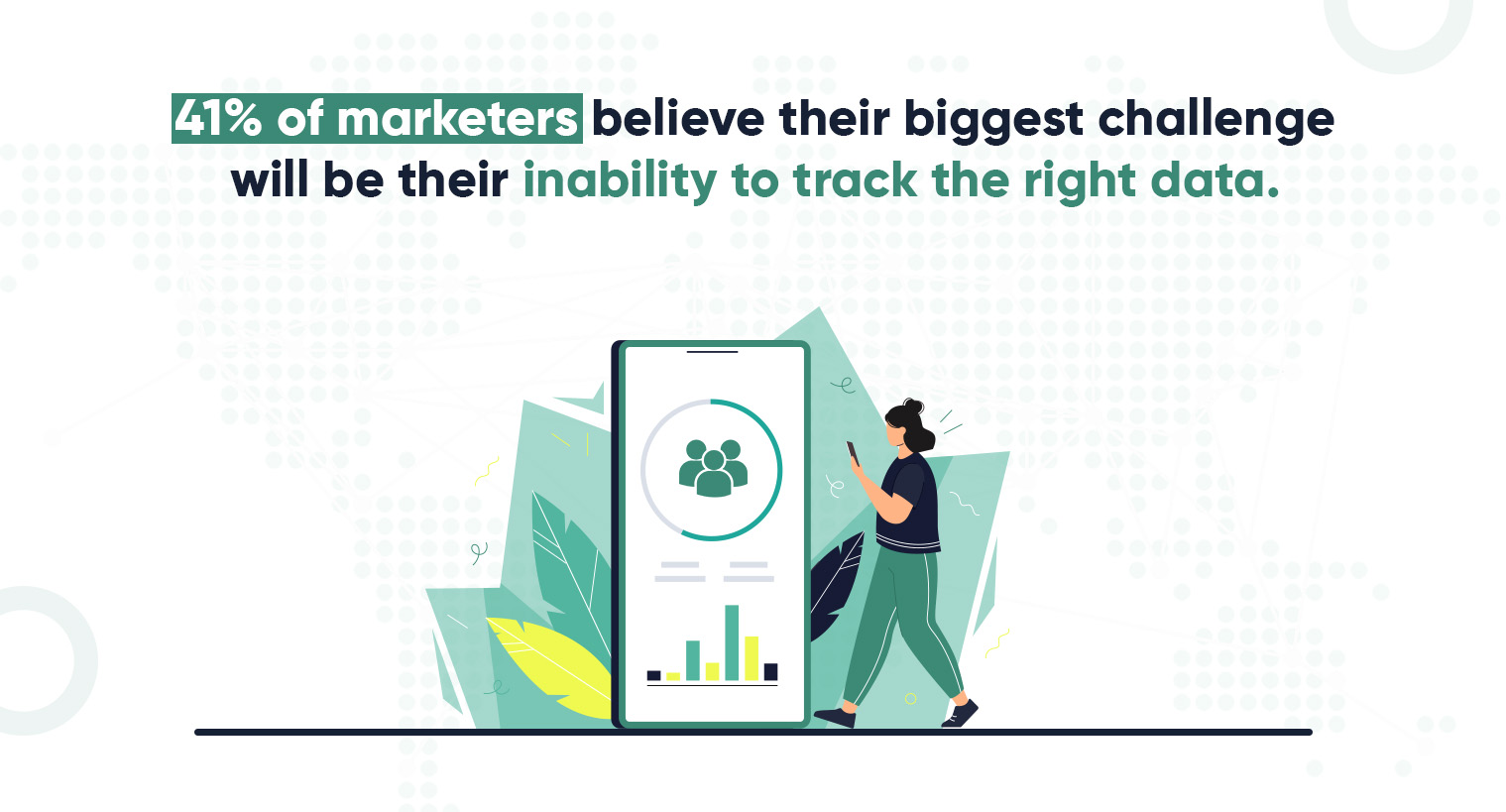
Despite the growing privacy concerns of consumers, personalization remains a priority for them. Marketers must find new solutions to provide personalized experiences without relying solely on third-party cookies to avoid a decrease in ad revenue.
As a marketer, it’s crucial to stay informed and explore new solutions to navigate this shift successfully. This blog will provide answers to your questions on how to adapt to this change.
What Does Cookieless Future Mean?
The cookieless future or cookieless world refers to the ban on third-party cookies. The decision to ban third-party cookies was initiated by Safari and Firefox and later adopted by Google.
The phase-out of third-party cookies by Google, originally scheduled for 2022, was postponed to 2023 and has now been further delayed to the second half of 2024. Take a look at the timeline of third-party cookie depreciation and how Google has again pushed back its deadline, this time to 2024.

This shift in the digital landscape is driven by privacy concerns and will have a significant impact on advertisers and marketers who rely on cookies to gather information about their target audience.
In the cookieless future, advertisers will need to find third-party cookie alternatives for personalization and targeting, such as through first-party data and the use of privacy-focused advertising methods like contextual advertising.
They should also consider investing in the development of new data sources and technologies and prioritize transparency and user privacy.
To prepare for this change, advertisers and marketers should stay informed about industry developments and new regulations in privacy and data usage.
What Will Happen in a Cookieless World?
An immediate impact of a future without cookies will be seen in the size of third-party audiences, causing a decrease in their viability for media buying.
As a result, marketers will face lower conversion rates and ineffective targeting.
To counteract this impact, marketers must devise innovative audience analysis techniques and utilize alternative marketing methods such as email marketing.
In the wake of phasing out third-party cookies, businesses and marketers need to shift to advertising industry’s next big step – contextual targeting as much as possible.
Contextual targeting strategies could prove crucial to successfully personalize experiences throughout the customer journey while ensuring data security and relevant, targeted advertising opportunities.
Also read: https://www.silverpush.co/news/what-does-life-after-third-party-cookies-look-like/
How Can Marketers Prepare for a Cookieless Future?
As the use of third-party cookies faces imminent extinction, the advertising industry has been actively searching for alternative solutions. Despite the availability of various options, each comes with its own limitations. Here are some of the top substitutes for third-party data to drive your digital marketing efforts:
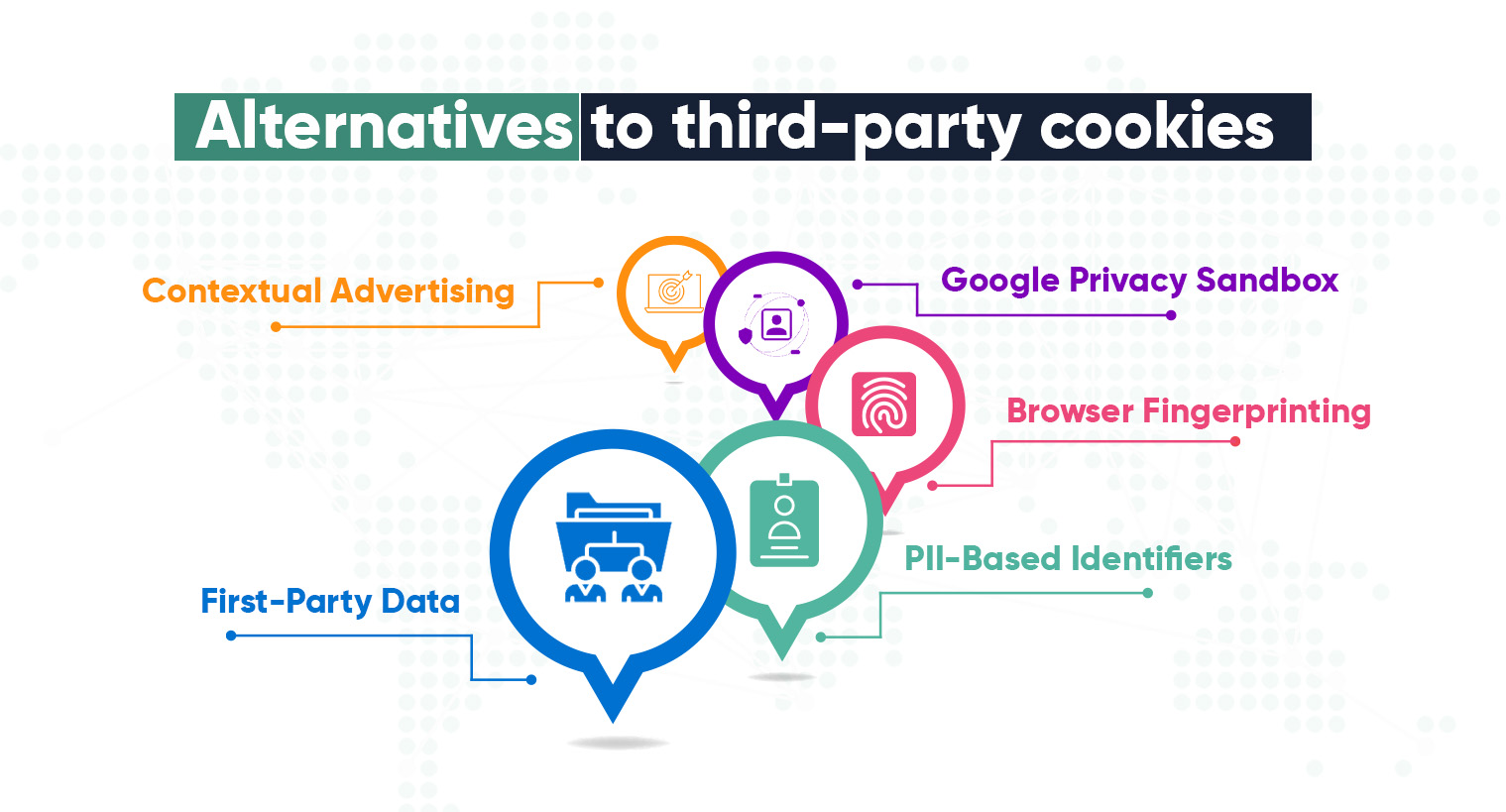
1. First-Party Data
This targeting method also uses cookies, enabling similar targeting capabilities. However, first-party data strategies only track a consumer’s activity within the website that has implemented them.
For instance, if a consumer returns to Pepperfry.com, the site will recall the furniture they previously viewed, but that furniture won’t follow that person to other sites.
This approach allows marketers to target ads to consumers effectively on their own websites without tracking them beyond their platforms. While some customers may appreciate the personalization, collecting first-party data may still feel intrusive to those who are simply browsing and don’t want to feel followed.
2. PII-Based Identifiers
Using personal identification information such as email addresses or phone numbers, marketers can track users across different devices. This is in contrast to cookies, which do not typically transfer between desktop and mobile. With PII-based identifiers, a site can recognize when a previous user has returned by recognizing an ID generated from a login or other site action. This ID does not link to any personally identifiable information, but instead to the user’s online behavior.
3. Browser Fingerprinting
This technique identifies a device and user by assessing various attributes of a device through the browser. This includes browser type, operating system, active plugins, timezone, language, screen resolution, and settings. While browser fingerprinting can accurately identify the same user across interactions, it is not 100% certain.
4. Google Privacy Sandbox
Google Privacy Sandbox, which is still in its early development stages, aims to provide advertisers with anonymized information through the use of five application programming interfaces (API) in Chrome’s browser instead of cookies. This will limit the amount of information available to marketers while allowing individual users to remain anonymous.
5. Contextual Advertising
Contextual advertising is the only option that does not involve any surveillance. Instead of focusing on consumer identity, contextual advertising displays advertisements next to content that is relevant to the ads.
Which one would you like better? Viewing an ad for sports shoes while reading an article about Jeff Bezos (because a few days back you were scrolling through the internet searching for gym shoes) or, coming across an ad for sports shoes while reading an article on fitness.
Definitely, the latter! Because it is relevant to the content they are currently engaged with.
By targeting interests rather than individuals, contextual advertising is a smart option for advertisers to target consumers in the imminent cookieless future.
Ad tech companies like Silverpush are at the forefront of the shift towards a more privacy-focused and cookie-free future, thanks to advancements in contextual technologies.
Silverpush Will Help You Thrive in Cookieless World
Silverpush saw the flaws of third-party cookies years ago. Since, they’re not people-based, not transparent, and can’t identify people over time they never needed it to help their clients reach their relevant audience.
Silverpush, a contextual advertising company has always known that the key to reaching the relevant audience is through contextual targeting.
That’s why we built our AI-powered solution – Mirrors in 2012. Initially, we offered our contextual advertising solutions only on YouTube. Now we have expanded our technology to OpenWeb, Meta, and CTV.
Mirrors privacy-safe and contextual targeting solutions are a rescuer in the cookieless world. Personalized ads are delivered to the audience with zero dependencies on their data. Most importantly, the placement of ads is done in a completely brand-safe environment with relevance to a particular brand.
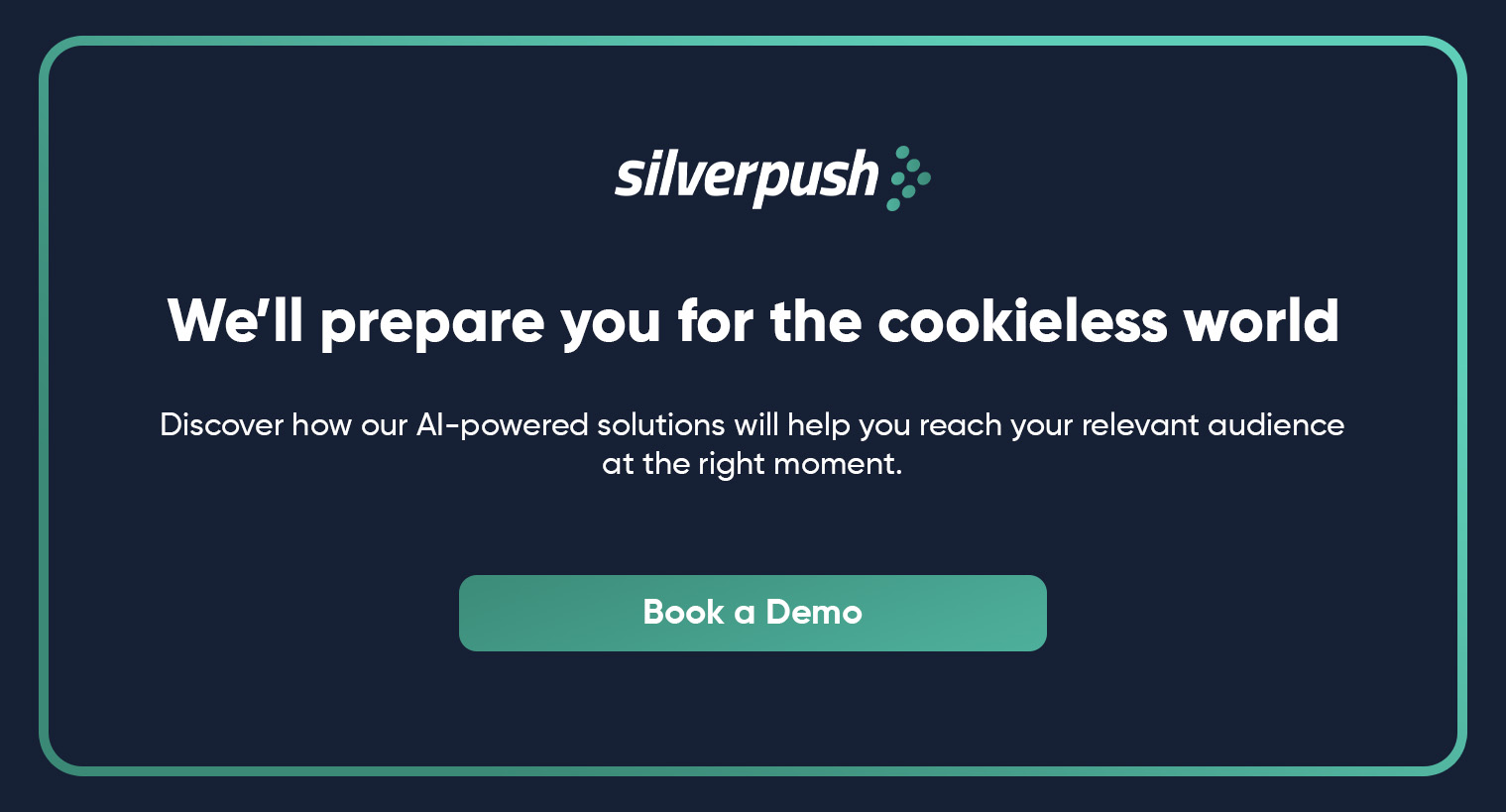
Super Bowl Advertising: A Month-Long, Multi-Screen Event for Brands
PUBLISH DATE: 30 January 2023
For Americans, there are two events that they hyped for a whole year – Football season, and waiting for football season. Football remains highly popular among Americans, with searches for “NFL Draft” and viewership numbers showing an unwavering interest in the sport. According to Google Search data, football is more popular than any other sports league in the US. Despite the challenges faced by the sport this year, the NFL’s popularity continues to rise, with Nielsen data showing a steady increase in viewership over the past decade, outperforming the top 10 network shows.
The upcoming Super Bowl in February is expected to attract a large audience, making it an attractive opportunity for brands to invest in marketing. Historically, brands have focused on airing expensive commercials during the game, but as consumer behaviors change, the window of opportunity for brands has expanded. As a result, more brands are taking advantage of this opportunity to reach a larger audience.
Super Bowl Ad Cost History
The Academy Awards show is the only event that comes close to having the largest TV audience in the US, but the NFL’s Super Bowl remains the largest TV spectacle, both in sports and the country. Despite some decline in certain areas, the Super Bowl is still considered the ultimate advertising platform by brands and attracts many companies to showcase their products and services.

Reaching the Right Audience has Never Been Easier
As the Big Game approaches and signals the end of the NFL season, advertisers are eager to take advantage of one of the year’s largest TV events, attracting over 100 million viewers annually. Despite a decline in overall viewership last year, the game broke the record with 1 billion total streaming minutes, signaling a shift in the way people watch the event. The entire week presents a major opportunity for advertisers to reach a vast audience across all devices, balancing the reach of linear TV with the convenience of streaming.
Focus on the Task Ahead
Advertisers should take advantage of the fact that viewers don’t just watch the game, but spend the whole weekend consuming related content and updates. This includes the pre-game show, city festivities in Los Angeles, team interviews during media week, and more, providing multiple touchpoints for advertisers. With the extended amount of time, advertisers can reach their target market through various streaming channels, including phones and other devices, expanding beyond just TV viewership.
Achieve More with Less
Advertising during the Big Game is costly, with NBC reported to charge up to $6.5 million for a 30-second spot. However, businesses can still reach their target audience at a lower cost through CTV advertising. CTV ads can be targeted based on online behavior, allowing them to reach the intended audience even if they’re not watching the game.
Targeting Relevant Audiences with Geo-Fencing During the Big Game
Advertising during the Big Game offers a unique opportunity to target relevant audiences through geo-fencing. Advertisers can reach users who have taken action to be at locations such as the stadium, team hotels, host city, and other events related to the game. These audiences are highly engaged, and advertisers can retarget them during and after the game, even across all devices in their household. With granular reporting and attribution, brands can track online and offline conversions and see the impact of each individual geofence from the Big Game weekend.
CTV campaigns offer a chance for advertisers to reach relevant audiences with high-impact ad campaigns. During the big week, many advertisers struggle to stand out, but those using a programmatic platform are better equipped for success. The number of people streaming the game is rising, and fans will be using multiple devices, providing advertisers with opportunities to reach their desired audiences. Real-time reporting also provides insights into campaign performance, allowing advertisers to quickly adjust and allocate budgets to higher-performing channels and markets. Every advertiser has a chance to participate in TV’s biggest event.
Advertising in the Age of Climate Change: The Adoption of Carbon Emission Metrics
PUBLISH DATE: 16 January 2023
The urgency of the climate crisis is increasing, and the media industry is no exception. While some professionals are working to reduce their direct operational emissions, there is an urgent need for common standards to be set for indirect emissions that come from digital advertising.
The digital advertising industry is becoming increasingly aware of the significant carbon footprint associated with the delivery of billions of digital ad impressions daily. Although a few brands, agencies, and ad tech companies have pledged to reach net zero carbon emissions by 2030 or sooner, the question remains: What is needed to encourage the majority of the industry to adopt similar goals?
Carbon Footprints Laid by Digital Ads
Although it is often thought of as more environmentally friendly, digital advertising still has a significant impact on the environment. In fact, it is responsible for about 2-4% of global carbon emissions, which is comparable to the aviation industry.
To give context, it is essential to note that serving one million ad impressions generates one metric ton of carbon dioxide emissions, which is equivalent to the emissions produced by (Source: venturebeat.com).
1. One passenger on a round-trip flight between Boston to London.
2. Charging over 121,000 smartphones to full battery power.
3. The carbon in 2.4 million plastic straws.
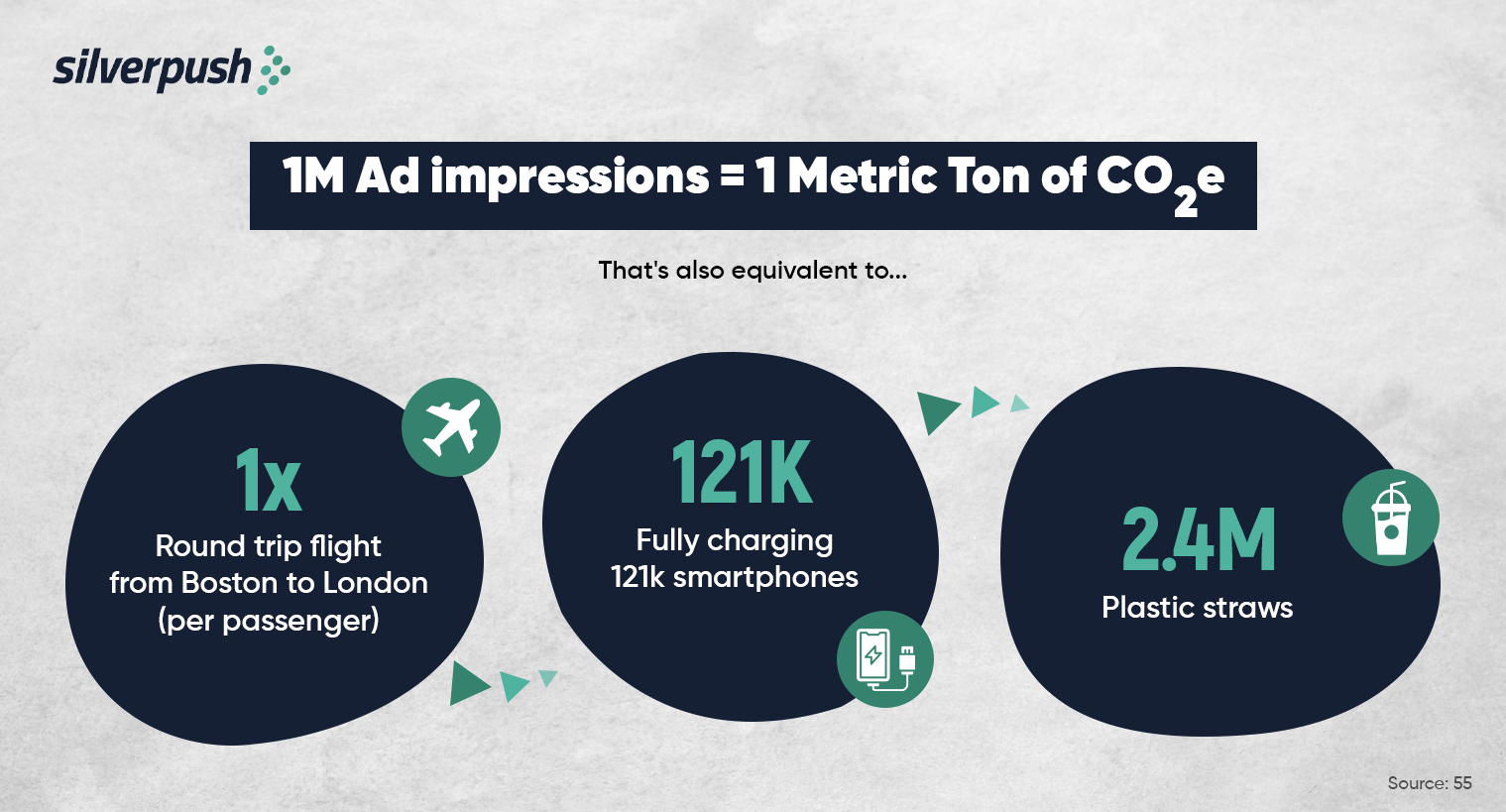 The operation of servers for digital advertising and the internet results in adverse environmental effects such as heat, noise, and pollution throughout the entire programmatic supply chain. This accumulative impact raises concerns for advertisers.
The operation of servers for digital advertising and the internet results in adverse environmental effects such as heat, noise, and pollution throughout the entire programmatic supply chain. This accumulative impact raises concerns for advertisers.
Tracking Carbon Emissions through Digital Ads
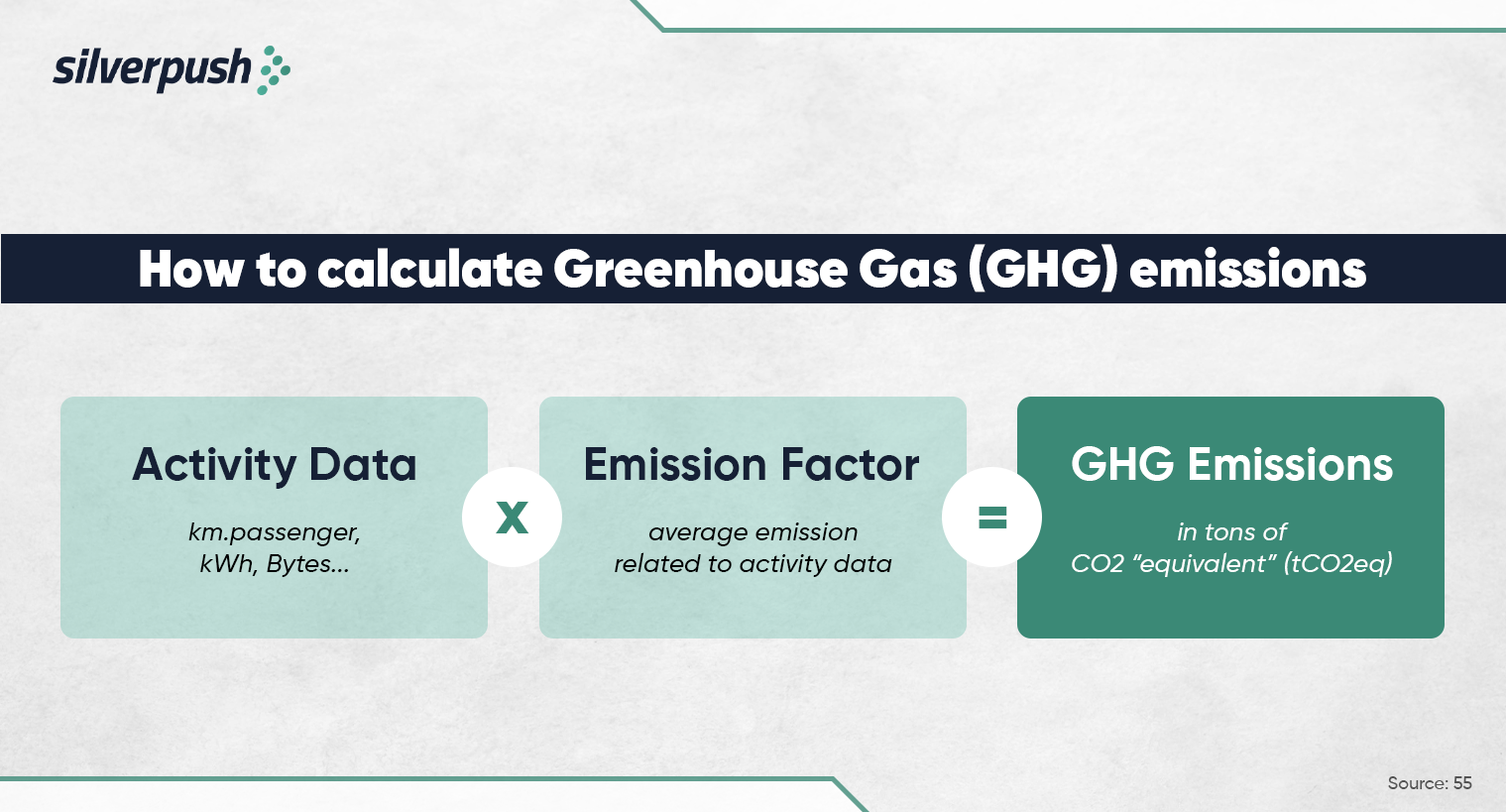
The digital advertising industry has been making progress in reducing its carbon emissions, following the Paris Agreement in 2016 which was signed by 200 countries with the goal of achieving net zero carbon emissions. In 2020, the UK Advertising Association launched Ad Net Zero, recognizing the industry’s need to become more sustainable. Many companies such as WPP, Havas, Dentsu, Disney, Unilever, and Dell have committed to reaching net zero emissions by 2030 or later.
Achieving aggressive carbon-reducing goals in the ad tech industry requires setting standards for measuring and reporting carbon emissions. Measuring carbon emissions allows an organization to determine its current level of CO2 waste and identify the primary sources of emissions. Similar to how companies report their financial performance, reporting on carbon emissions allows advertisers and brands to be transparent and accountable in their efforts to reach net zero carbon emissions.
Setting Industry Standards to Calculate Carbon Emissions
Measuring carbon emissions can be complex, but understanding the different components that contribute to a company’s carbon footprint can simplify the process. These components are typically broken down into three categories: Scope 1, Scope 2, and Scope 3 emissions.
Scope 1 emissions are direct emissions from sources that the company owns or controls, such as fuel combustion in boilers or vehicles. Scope 2 emissions are indirect emissions from the generation of purchased electricity, heat, or steam. Scope 3 emissions are other indirect emissions that occur in the value chain of the company, such as the emissions from the extraction of raw materials or the disposal of waste. which typically make up more than 90% of a company’s total carbon emissions.
For advertisers to accurately measure their carbon emissions, it is important to understand the contributions of their DSPs, SSPs, DMPs, publisher partners, and other vendors to their Scope 3 emissions. By assessing the impact of these vendors, advertisers can gain a more comprehensive understanding of their overall carbon footprint.
How do Silverpush’s Cookieless Solutions Neutralize Carbon Emissions?
One of the many reasons for high carbon emissions in digital advertising is audience targeting. Standard targeting methods may deliver high impressions, however, they generate wasted impressions due to the random placement of ads and the targeting of the wrong audience.
Silverpush offers precise and detailed targeting options that identify the most qualified audiences, which needlessly reduces pointless impressions and drastically reduces carbon impressions. By delivering relevant ads through contextual targeting, advertising campaigns become more efficient and fewer ads are displayed to users. This results in a reduction in energy consumption of servers and devices used to deliver ads, ultimately reducing CO2eqPM emissions.
Conclusion
Advertisers can reduce their environmental impact by implementing sustainable practices such as using renewable energy, measuring and reporting their carbon emissions, and offsetting their emissions through carbon credits or other means. They can also consider using more efficient technologies, such as programmatic advertising, that target specific audiences and reduce the number of ads delivered, ultimately reducing energy consumption.
Whether or not the ad tech industry will become carbon neutral by 2025 is uncertain and it would depend on the level of commitment from the industry players and the government to take the necessary steps to reduce carbon emissions. It would also require a concerted effort from all stakeholders, including advertisers, agencies, and technology providers, to adopt sustainable practices and invest in new technologies to lower their carbon footprint.
What do you think? Will Ad Industry become carbon neutral by 2025? Let us know your thoughts!
Ignoring CTV Advertising in 2023 is Not an Option: Here are the Top 5 Reasons Why
PUBLISH DATE: 10 January 2023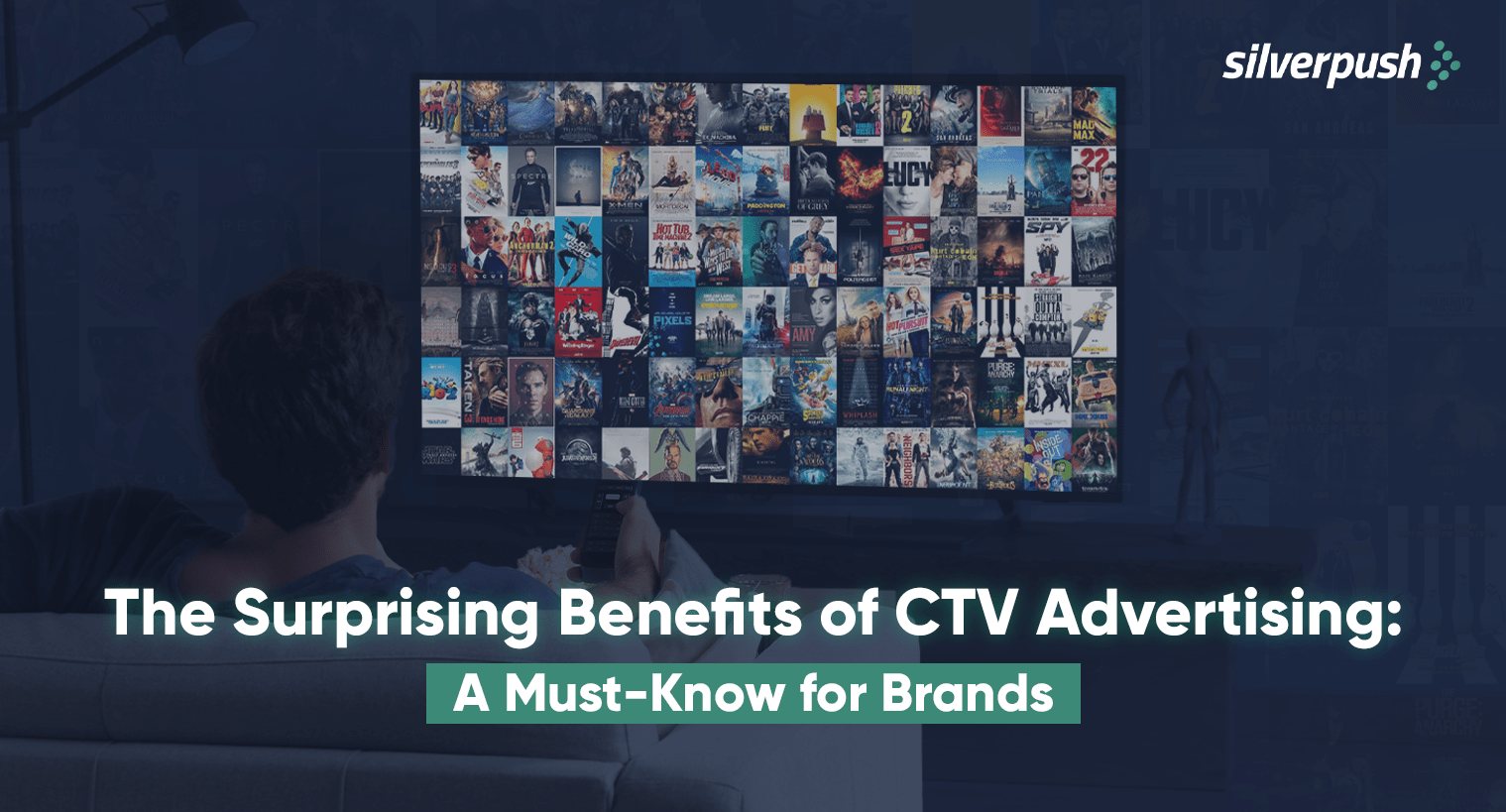
Learn the top 5 reasons why connected TV advertising should be a part of your omnichannel marketing mix in 2023.
Introduction
Over one-third of American households now rely on streaming for their television entertainment. How can marketers stay caught up when the majority of the audience is cutting cords?
According to an IAB survey, buyers are shifting their ad spending away from broadcast (53%) and cable TV (52%), and toward CTV advertising.
Dive deep into this blog to learn why connected TV advertising has become one of the fastest-growing video advertising platforms in 2023.
Benefits of Connected TV Advertising
1. Meet your Audience Where they’re

80% of U.S. households have at least one connected TV, including a smart TV, video game system, or streaming box. To boost conversions, brands need to reach consumers where they are spending their maximum time, i.e. connected devices. Have a look at the statistics below:
1. Streaming has increased by 266% globally in the last three years.
2. According to Conviva data, more than 500 million unique users watch 200 billion streams every year.
2. Advanced Targeting at a Lower Cost
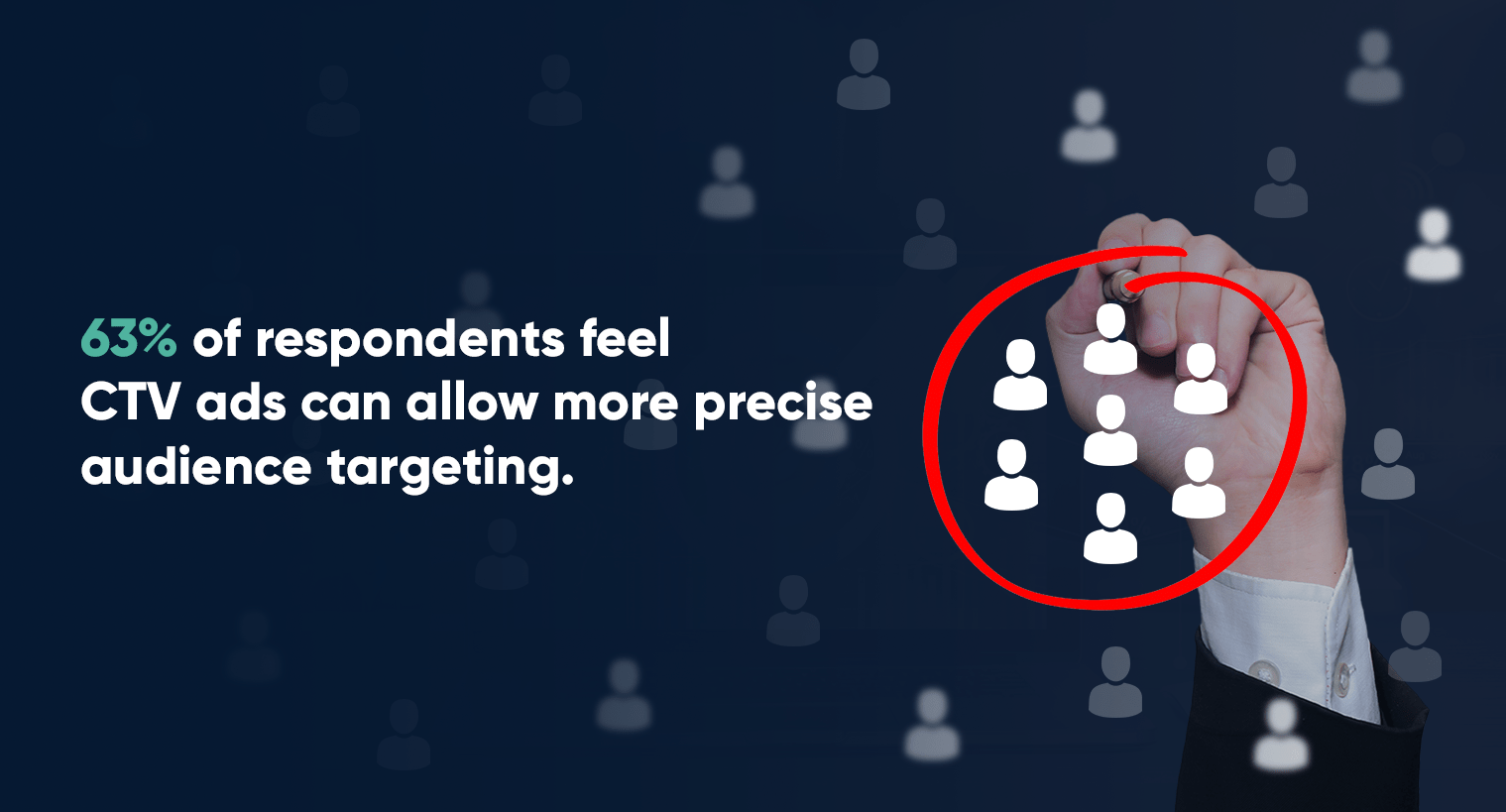
Brands can use connected TV advertising to select a target audience from an existing list. This helps you to meet your goal with far less money wasted and reach the target audience with engaging ads.
3. Consumers are More Receptive to CTV Ads

86% of customers are willing to view ads that are interesting or relevant to them, whereas just 40% are expected to reject CTV if there are too many ads. It’s no secret that customers are more tolerant of connected TV advertising since they are viewing content they like far less expensive than scrolling through stations on cable television.
4. Progress can be Tracked Easily

Since connected TV advertising works programmatically, it offers brands the opportunity to track their success through different methods including Video Completion Rate (VCR) and Automatic Content Recognition (ACR).
5. Improved Completion Rates

In North America, 95% of video ad impressions viewed on connected TV devices were completed in 2020, while the average completion rate was 80%. This is likely because brands include more non-skippable ads within the streaming content, which ensures that their message was seen by the audience.
Gear Up for CTV’s Biggest Evolution
In today’s digital age, brands and advertisers need to reach consumers where they are spending their time. Silverpush’s AI-powered connected TV (CTV) advertising provides brands a unique opportunity to connect with the global audience by delivering ads that are contextually relevant, engaging, and effective. To know more click here.
Shifting Industry Priorities in 2023
PUBLISH DATE: 09 January 2023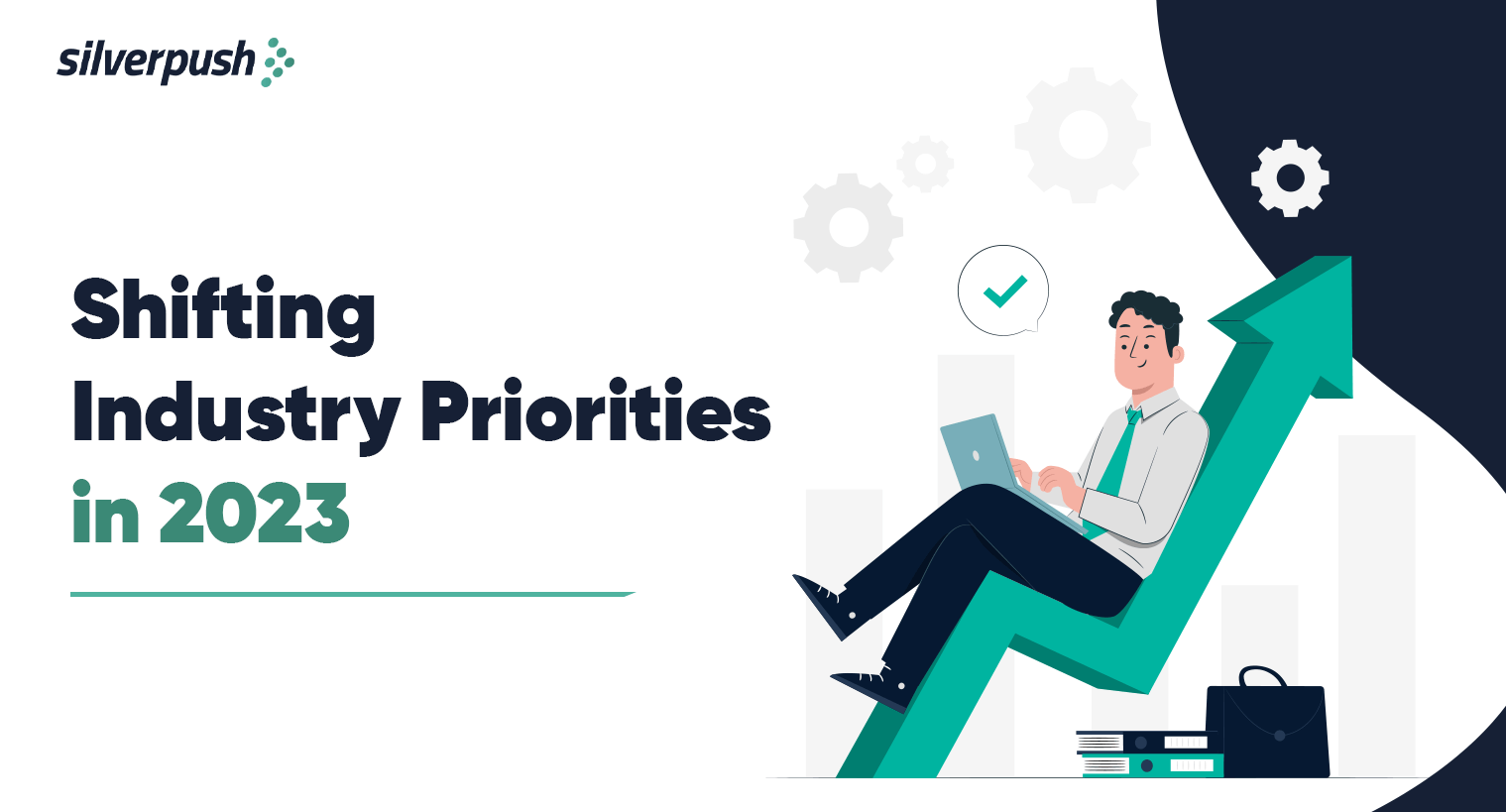
This past year has brought a roller coaster of ad spending. To prepare for 2023, industry professionals must be curating media strategies in anticipation of increasing macroeconomic headwinds. Innovation is definitely a big player in 2023, with advertisers eager to lead disruption in new forms of audience engagement, like 3D ads, while also expanding their efforts in established formats, like CTV.
As 2022 winds down and the industry reflects on last year, let’s take a look into the trends and technology that will shape the next year in the Adtech industry.
Where Industry Experts are Spending in 2023?
Some of the top media priorities where experts are planning to expand their horizon in 2023 are –
- Digital audio – 54% of media experts are anticipating an accelerated shift from terrestrial radio to digital music and podcasts.
- Digital video – At least half of the media experts have planned to prioritize this format for their next campaigns. This may be due to the case of increase in consumption of CTV and growing options for ad-supported video streaming services.
- Social media – Social media platforms will continue to be on the priority list for many media experts – allowing them to take advantage of high rates of consumer usage, ad engagement, and rapid increase of influencer marketing.
- Mobile – Another environment on the key priority list is Mobile. Considering a safe environment, mobile ad spend in the United States is expected to rise 14% year-over-year to surpass $194 billion in 2023.
What are the Major Challenges for Media Experts in 2023?
The deprecation of third-party cookies will happen by early 2024 and has become one of the top challenges for ad buyers and ad tech in 2023. Many consumers are opting out of in-app data tracking, and privacy legislation.
This further comes along with another top challenge which is ad placement. This may include deploying ads either adjacent to risky content or misinformation and fake news.
Thus, these concerns about decreasing data access and ad context highlight an urgent need for solutions that allow advertisers to target audiences based on the content they are consuming (i.e contextual targeting), maximizing audience reach in a brand-safe & suitable environment.

As far as publishers are concerned, the sell-side is also expected to face media challenges, with decreasing access to consumer data/ cookies, choosing monetization with/ without social media platforms, etc.
Some common challenges that publishers are also likely to face are definitely less access to consumer data, identity system integration, maximizing yield, and monetizing first-party data.
Ads displayed next to irrelevant or unsafe content are also another challenge for publishers.
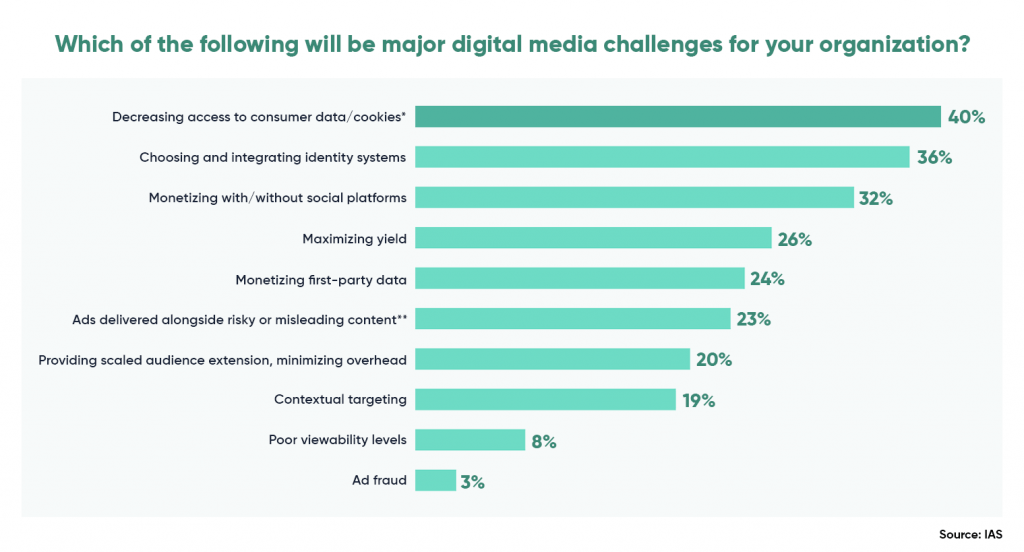
Which Media Type is Likely to Face More Challenges?
Experts have predicted that social media is most likely to face serious challenges in the coming year. Metaverse, as an emerging environment, shall also face challenges as media experts and even consumers have just begun to tap into it.
CTV, though has been on a successful rise, however, many media experts still shy away from spending their ad budget on CTV advertising. With growing demand, perceptions of challenges for this media type will see a rise too.
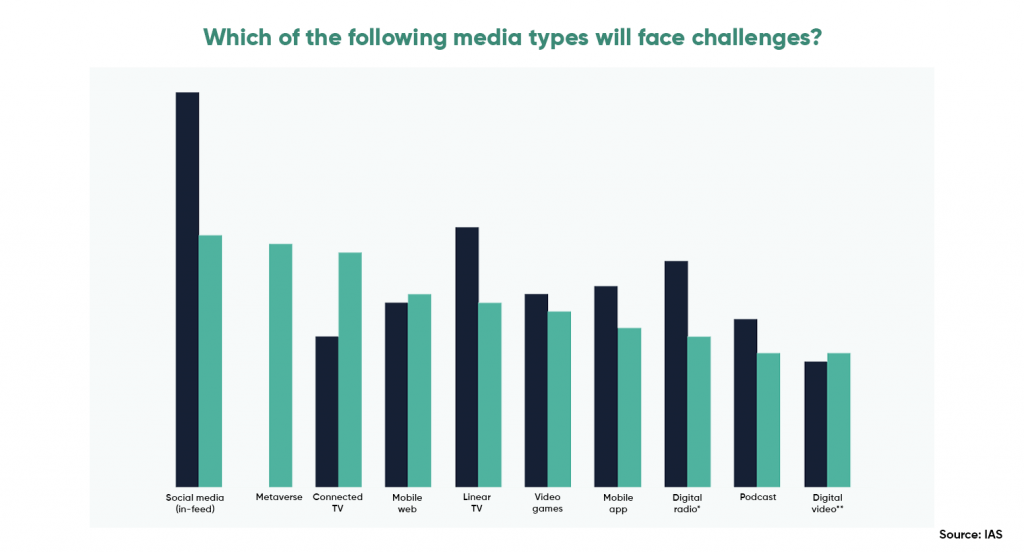
Digital Audio Builds Momentum in 2023

Digital audio—and digital audio advertising—is having a moment. More and more people are listening than ever before, and advertisers are rushing to join in on the fun. Media experts also agree that audio listeners will continue to migrate to digital formats. it is expected that digital audio ad spending is likely to grow 11% to surpass $7 billion next year.
With growing inventory and innovations in audio, industry experts also foresee risks a majority of experts are concerned about ad fraud, and more than half are about brand risk.
Due to these challenges in digital audio, experts see the value of third-party verification to ensure media quality.
The Future is CTV: Expanded Opportunities and Challenges
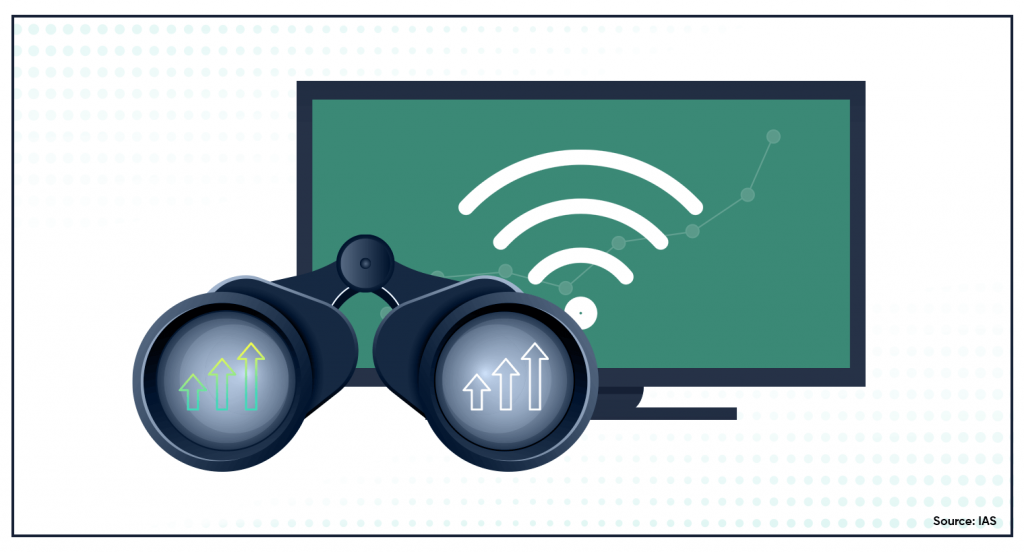
With most TV audiences streaming across several devices, it is crucial for brands and advertisers to invest in connected TV (CTV) & over-the-top (OTT) advertising as it will help them to reach viewers with premium inventory in a brand-safe environment.
One of the top concerns for CTV in the coming year is ad fraud, which is likely to be seen more of as ad inventory grows. Tracking CTV ad performance is also another issue. Since view-through rates (VTRs) are always high due to non-skippable inventory and click-through rates (CTRs) are irrelevant in this case as it’s not an option when streaming on TV or device, thus neither of these metrics are good performance indicators (KPIs) to measure the success of your ad.
To better track CTV ad performance – using pixels that are placed on the client’s website allows for internet protocol (IP) matching, and Cross-device targeting can be used.
Social Media to Remain Key Advertising Platform
Some things don’t change and that’s what happens with social media platforms as it remains to be key advertising platform, as per many media experts. Despite well-documented challenges with privacy, ownership, and its effect on public disclosure, the platform is hard to ignore with its unimaginable reach and engagement, especially when it comes to targeting Gen Z.
Looking forward, social media ad spend is expected to show a sustainable 9% year-over-year growth for the U.S. in 2023.
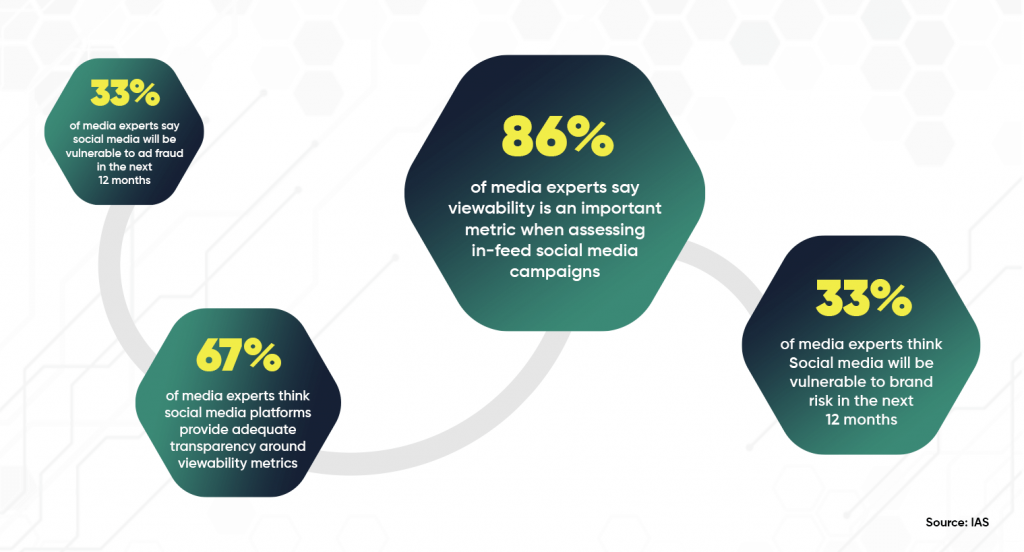
Mobile Consumption gives Rife Opportunities
Between consumers spending more time on their mobile devices watching videos and expanding 5G technology, 2023 is a year of innovation in the mobile space. In order to maintain high-quality media inventory, third-party verification will be an important factor, especially to protect brands against growing ad fraud.
Prioritizing Contextual Targeting in 2023
Contextual targeting has been in the game for a long time, however, with the deprecation of third-party cookies, many advertisers have started to shift their focus from audience/ behavioral targeting to contextual targeting. It’s a win-win for advertisers as they can reach their desired audiences at scale, without worrying about the cookies.


